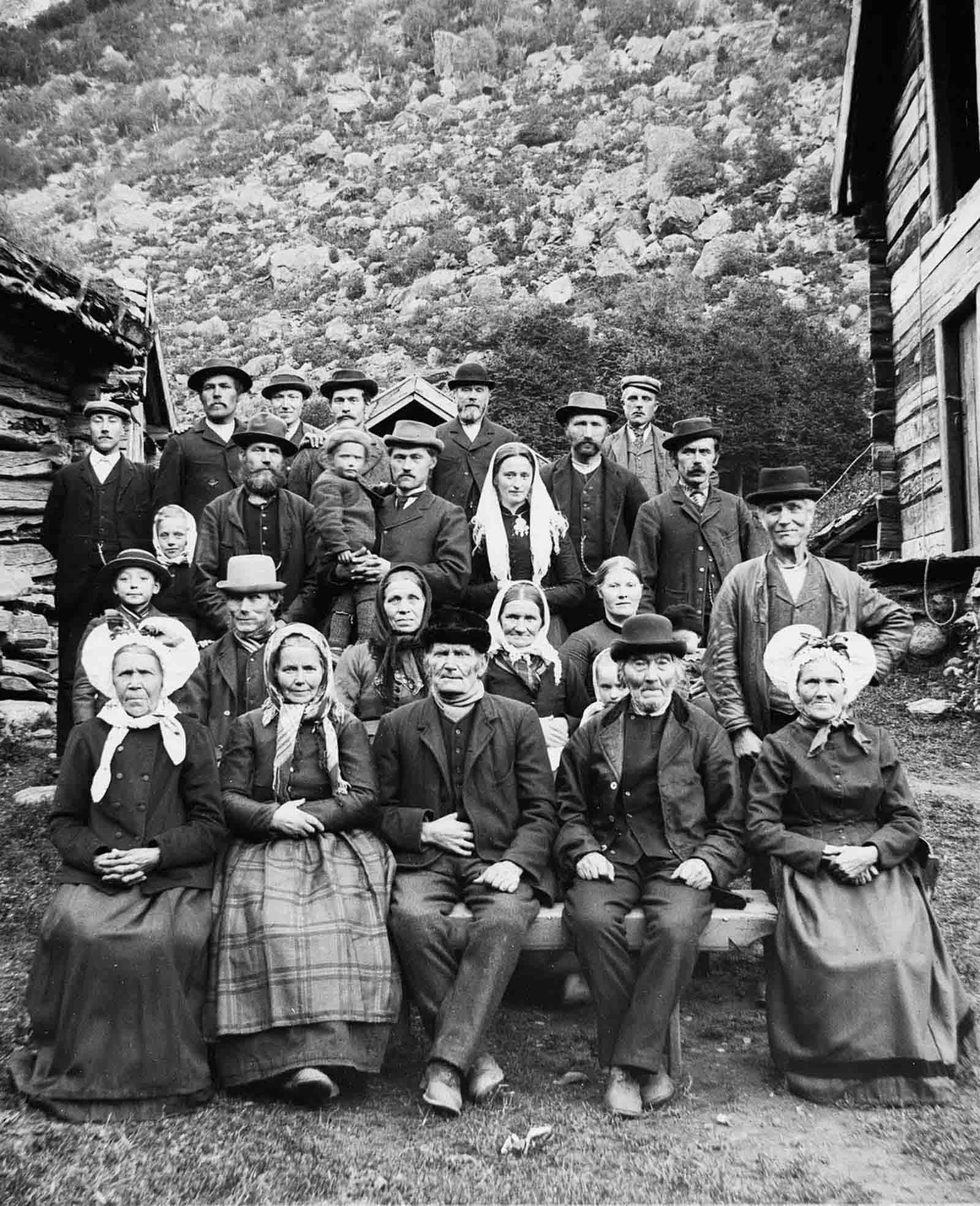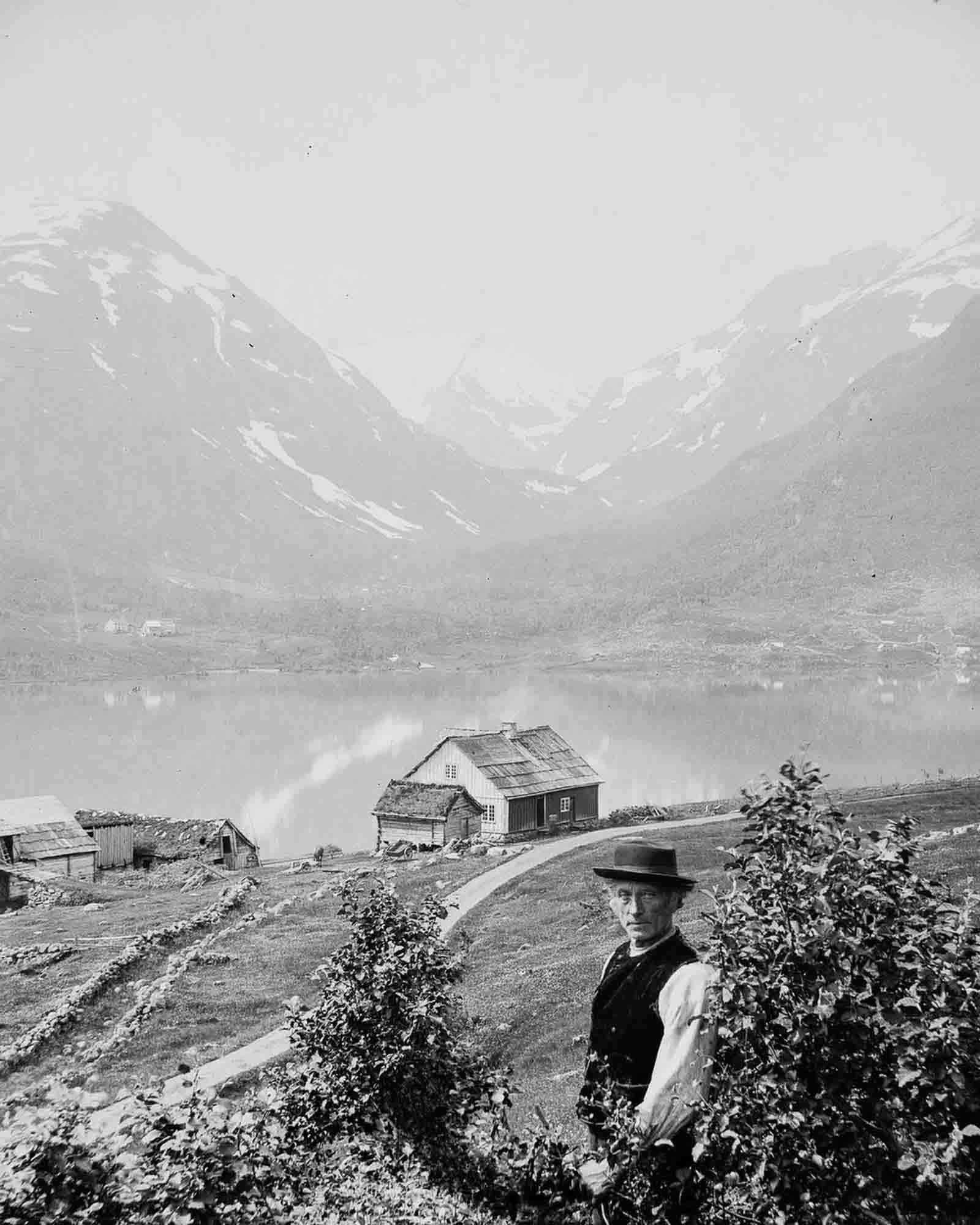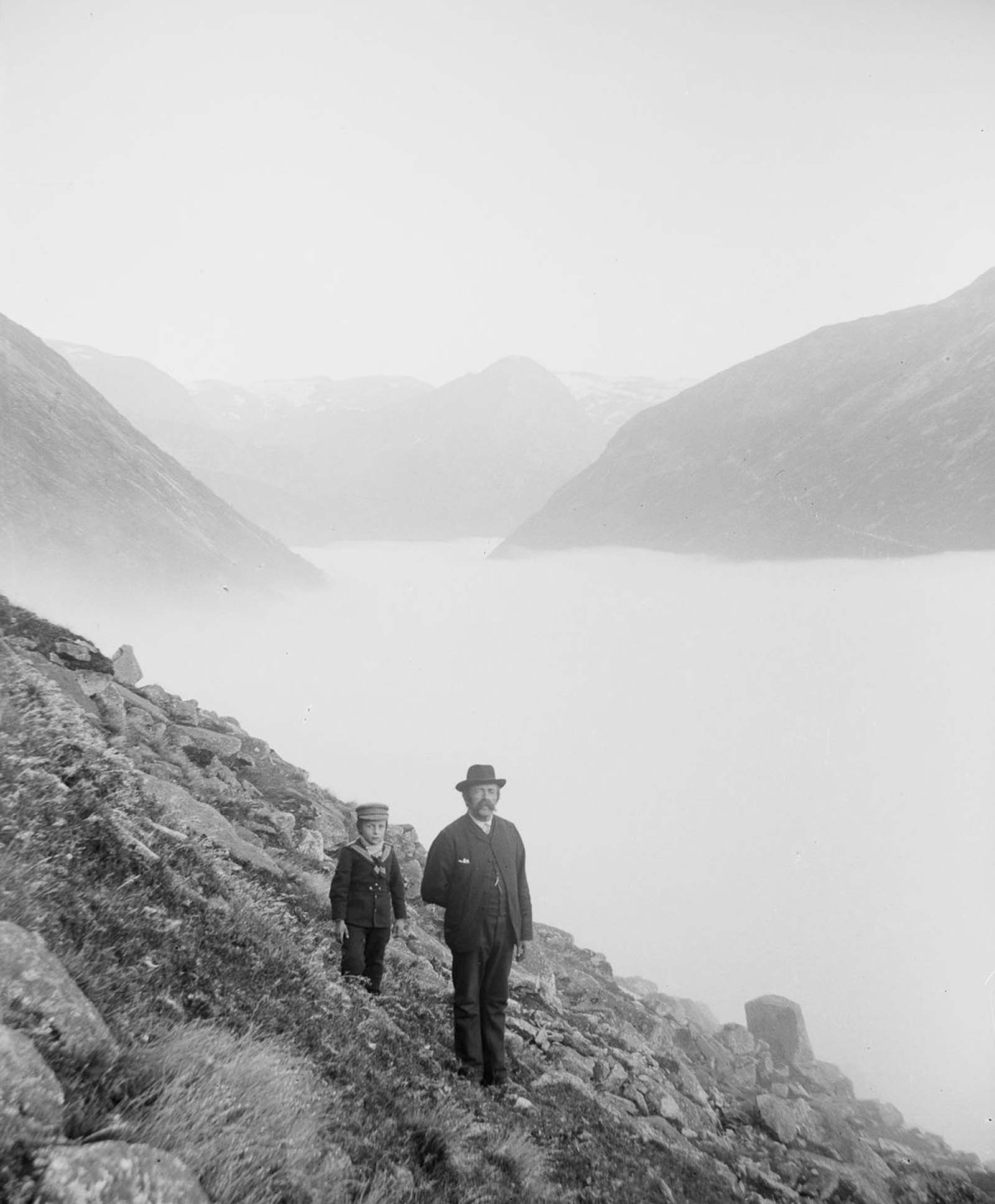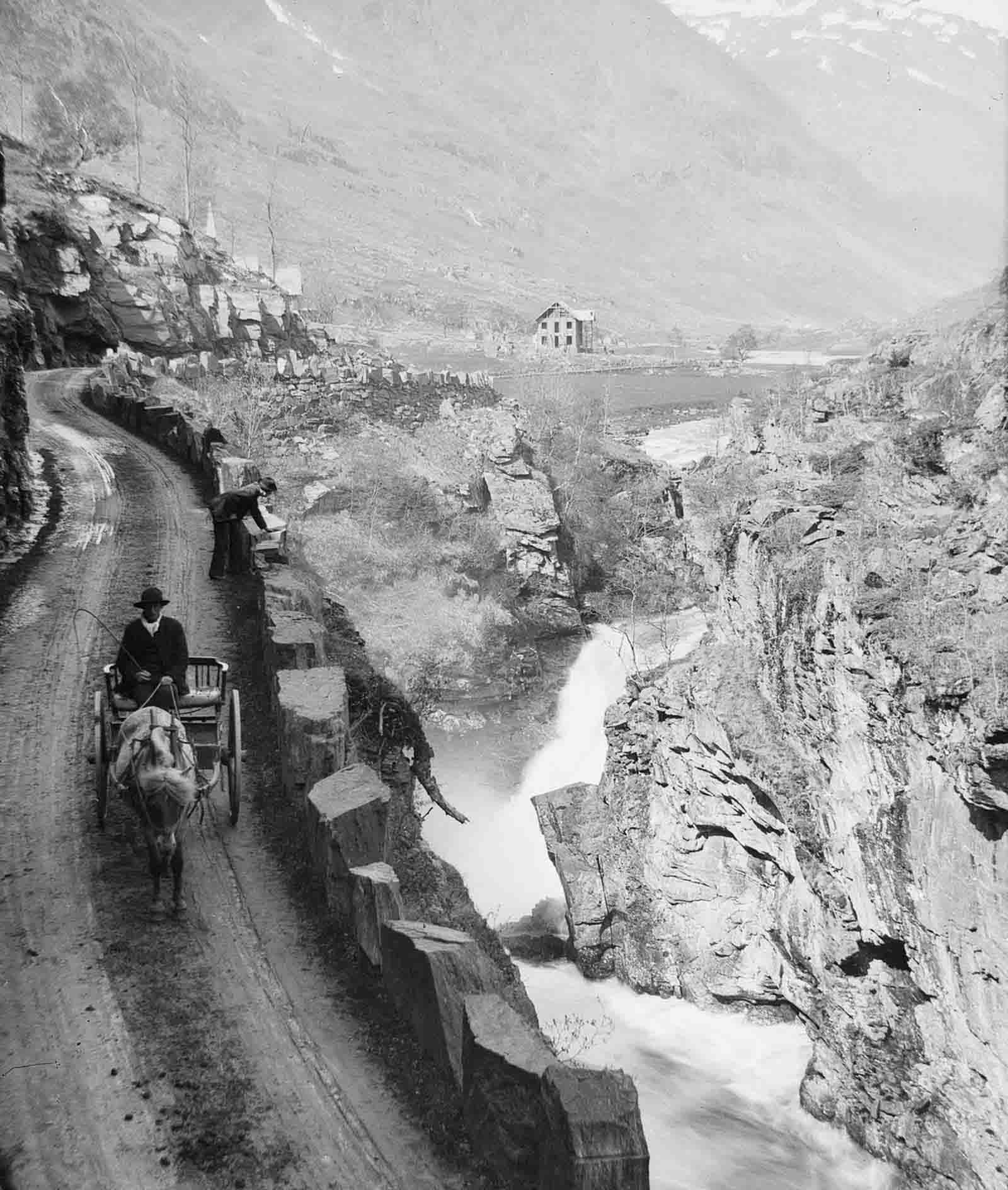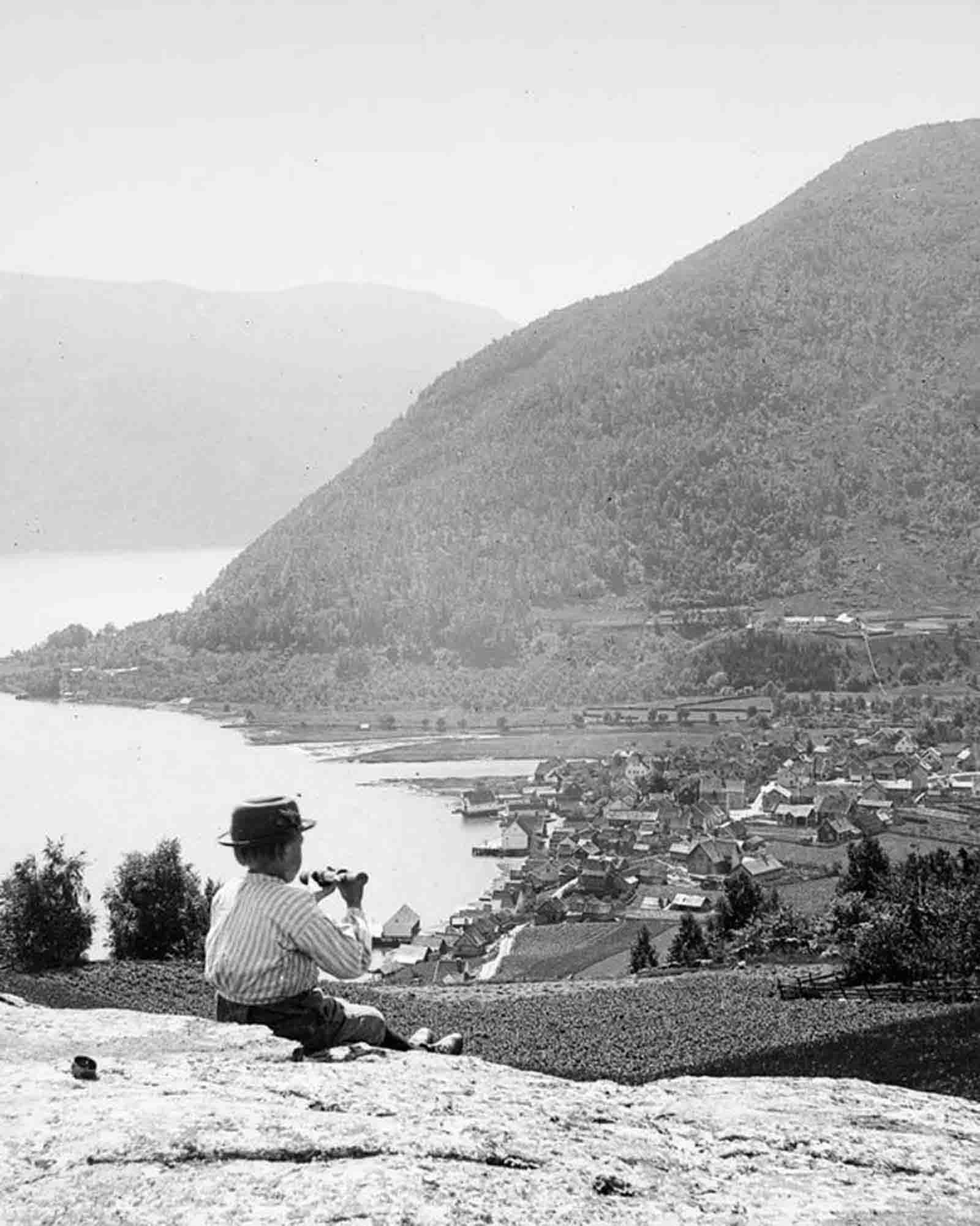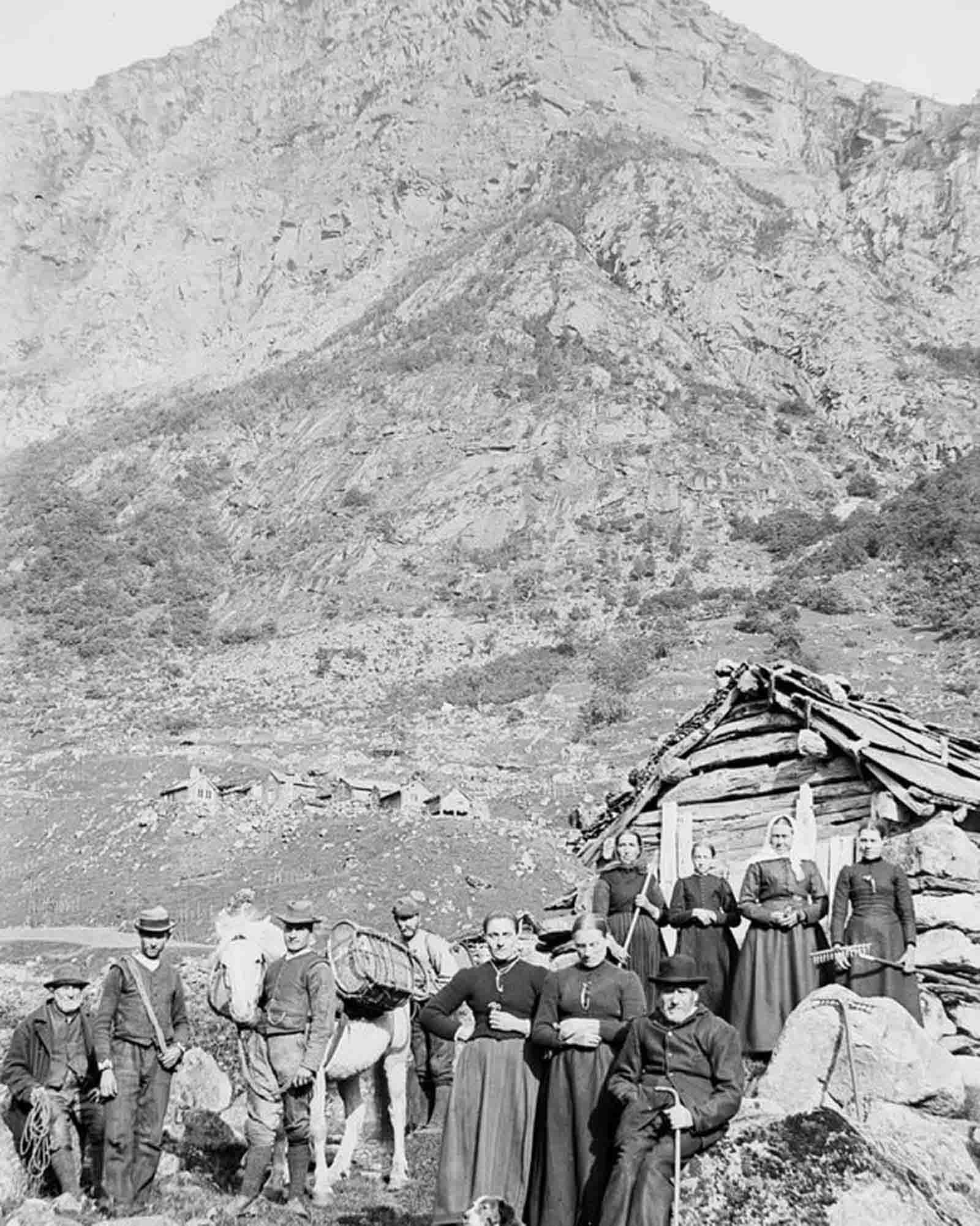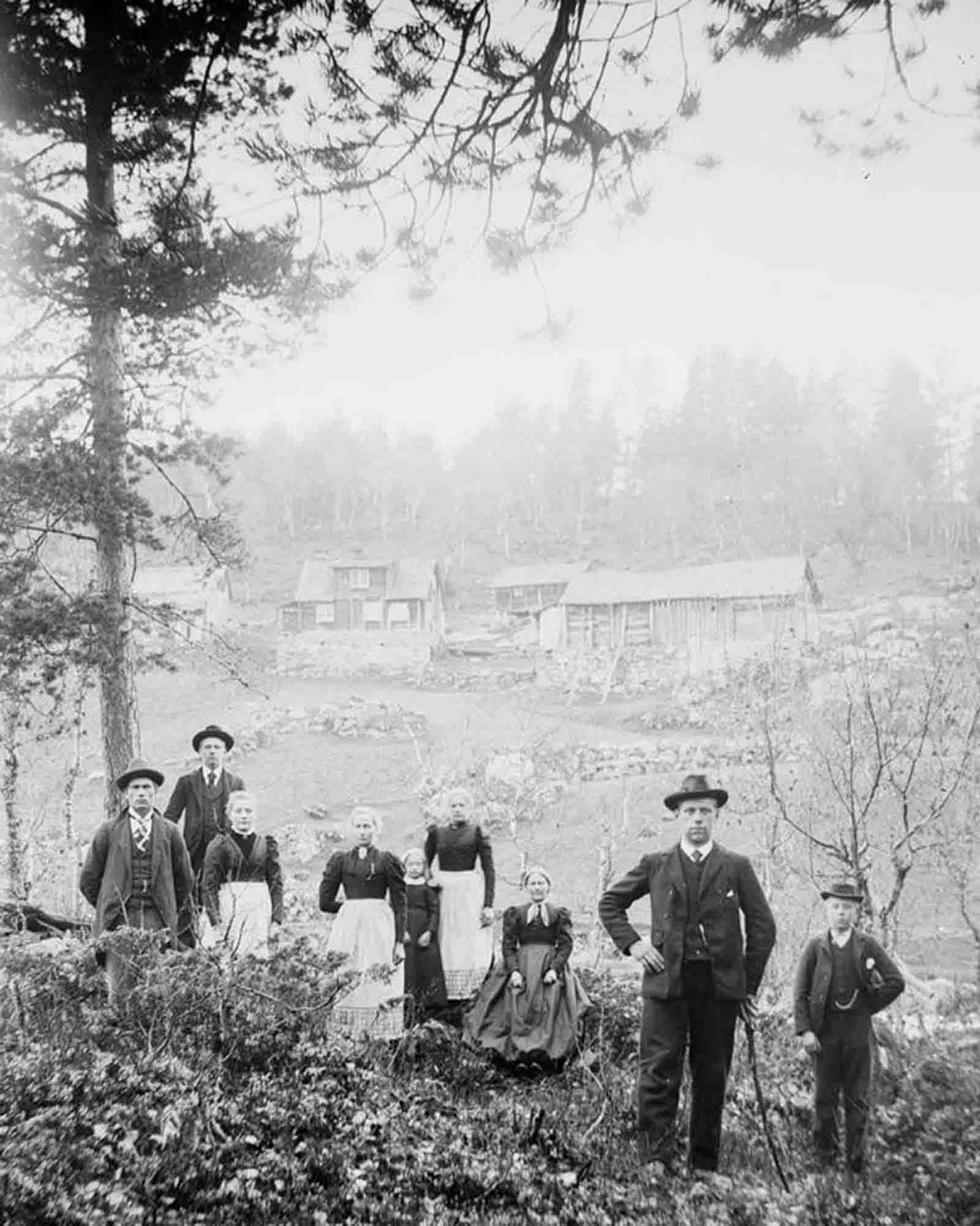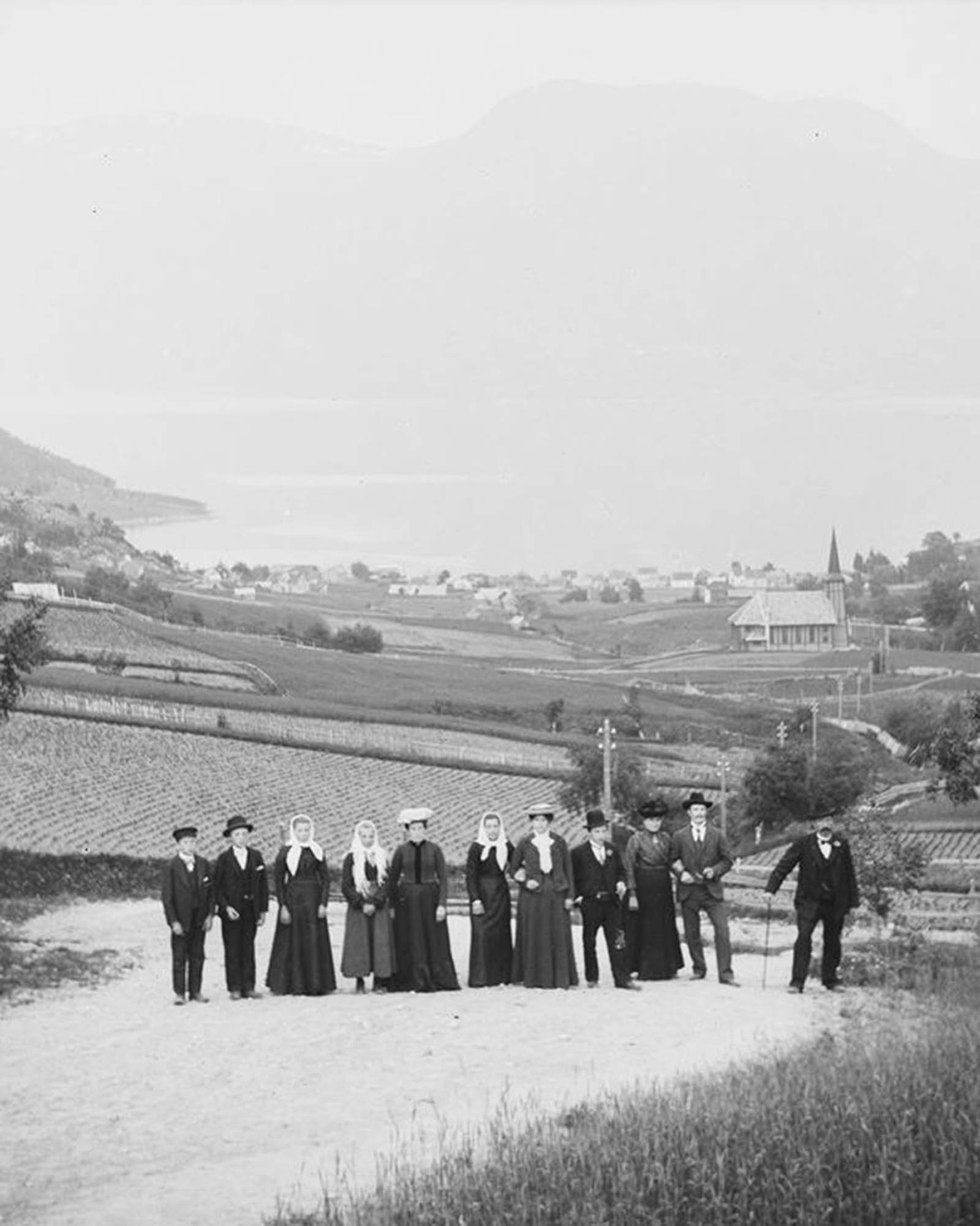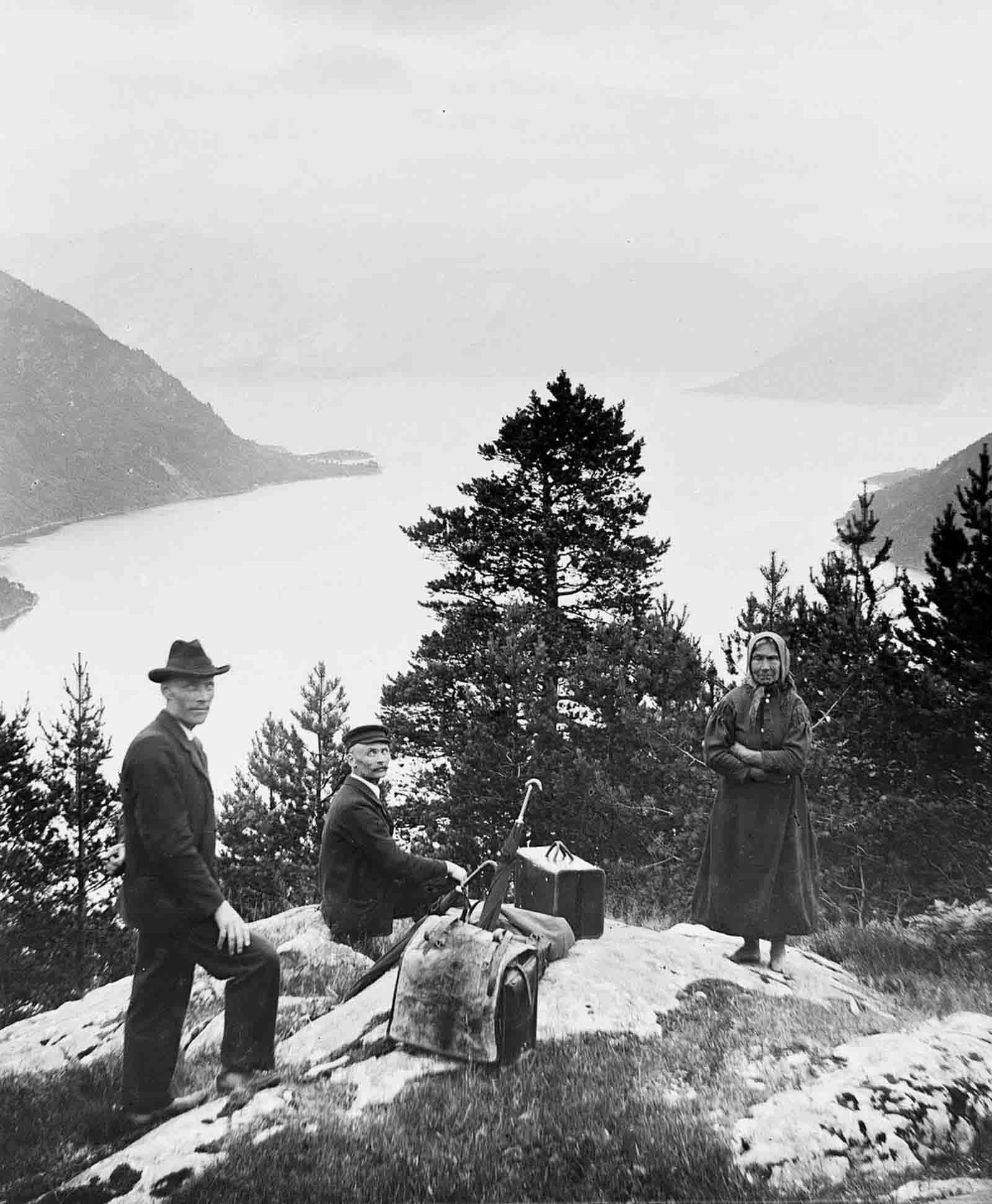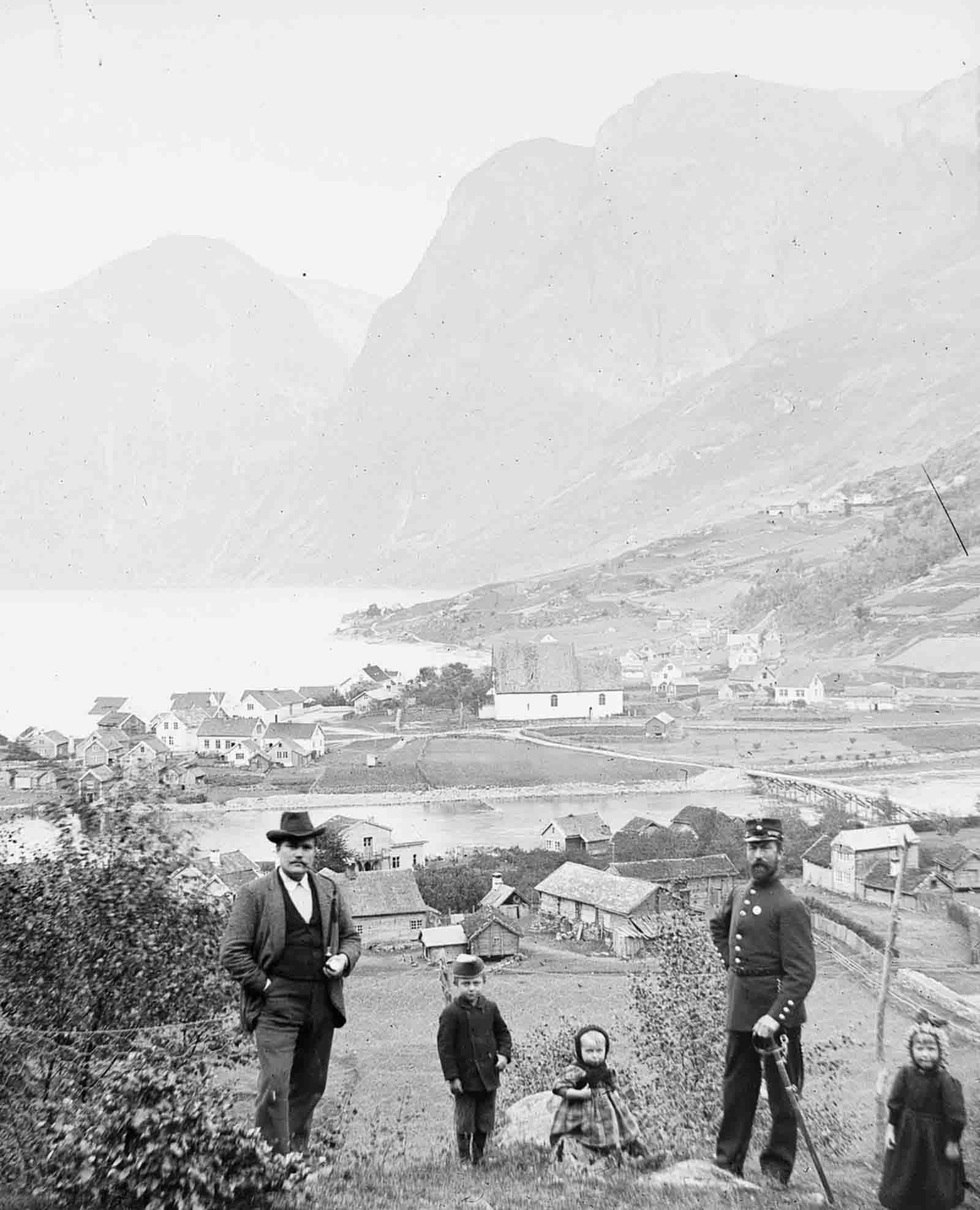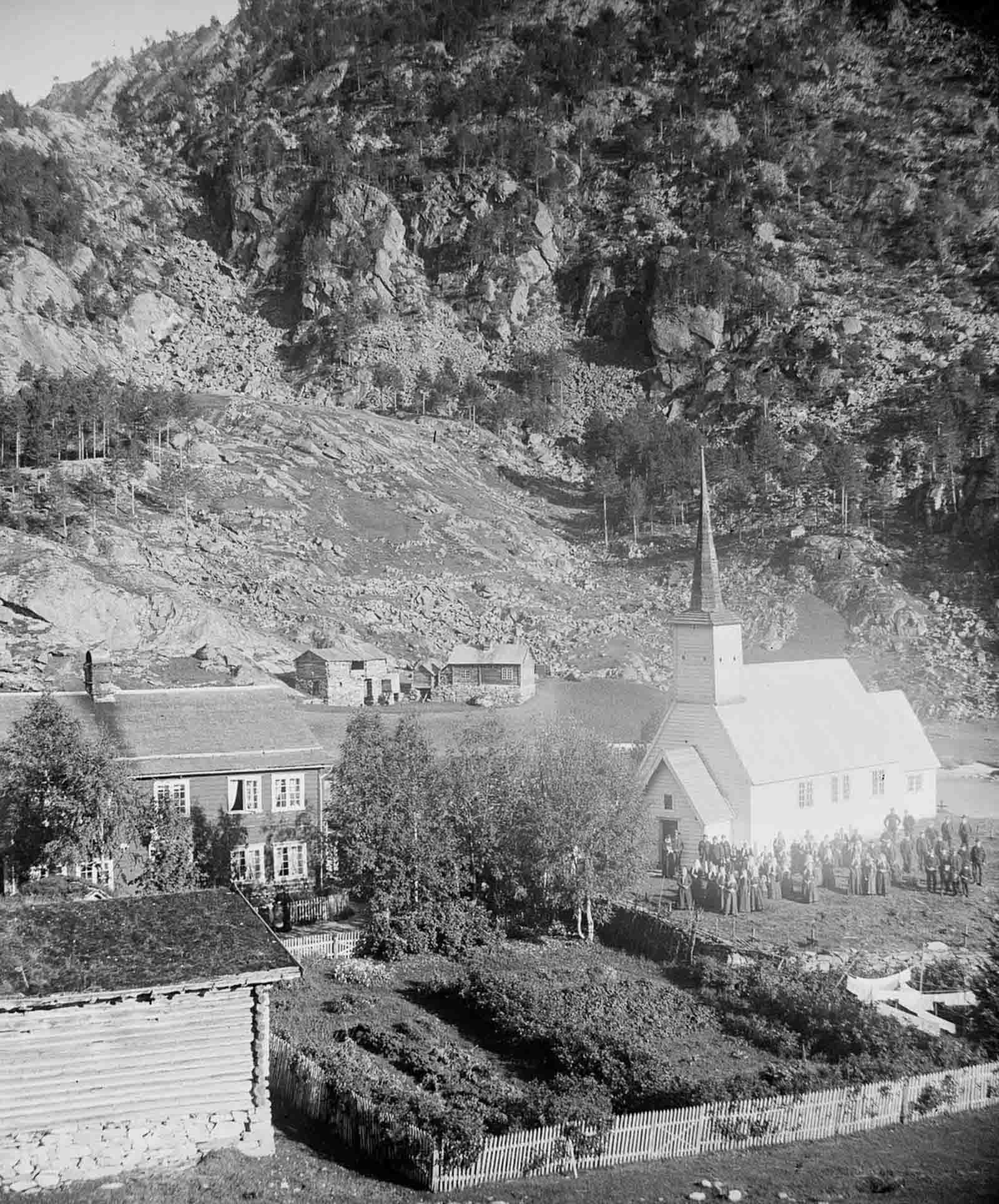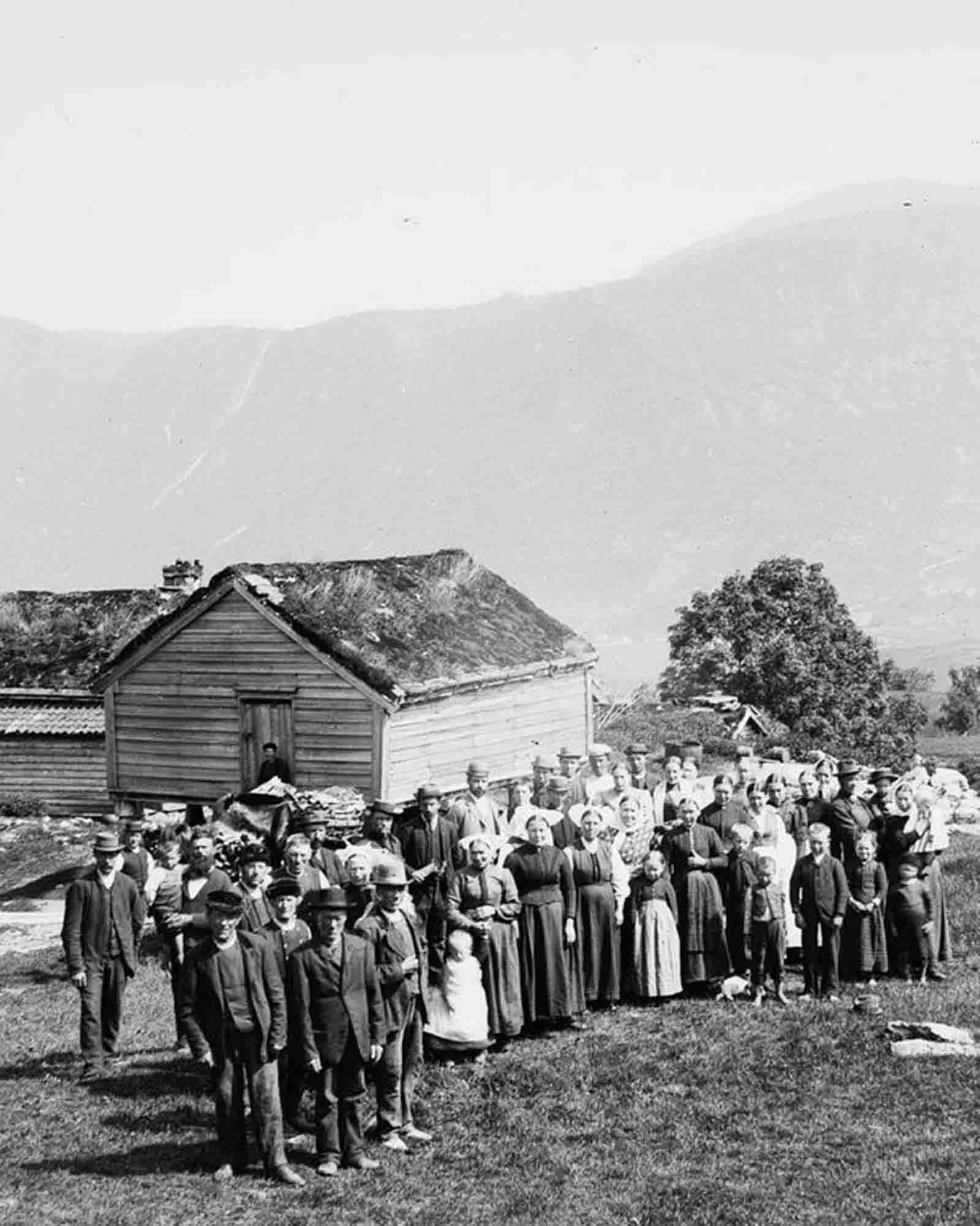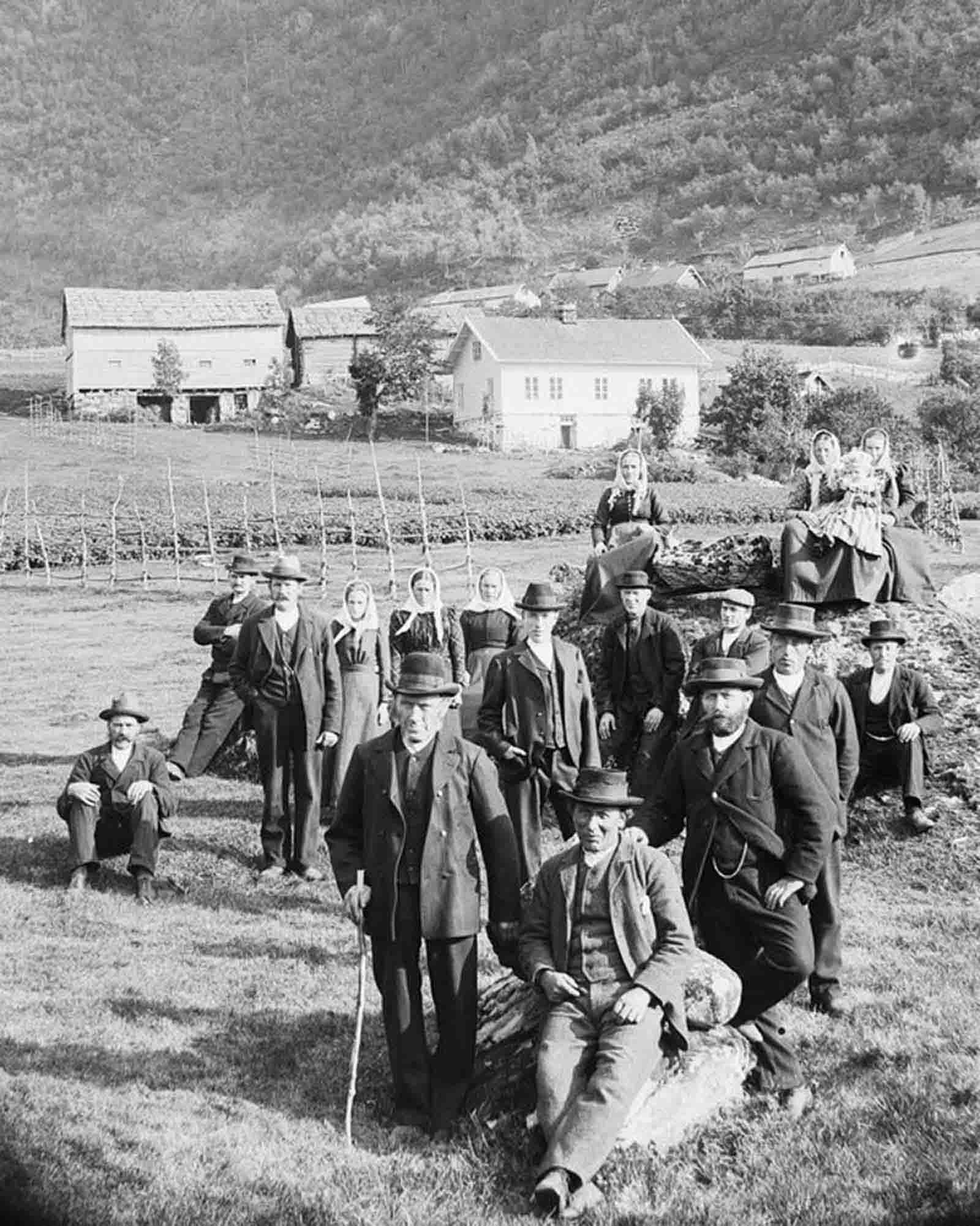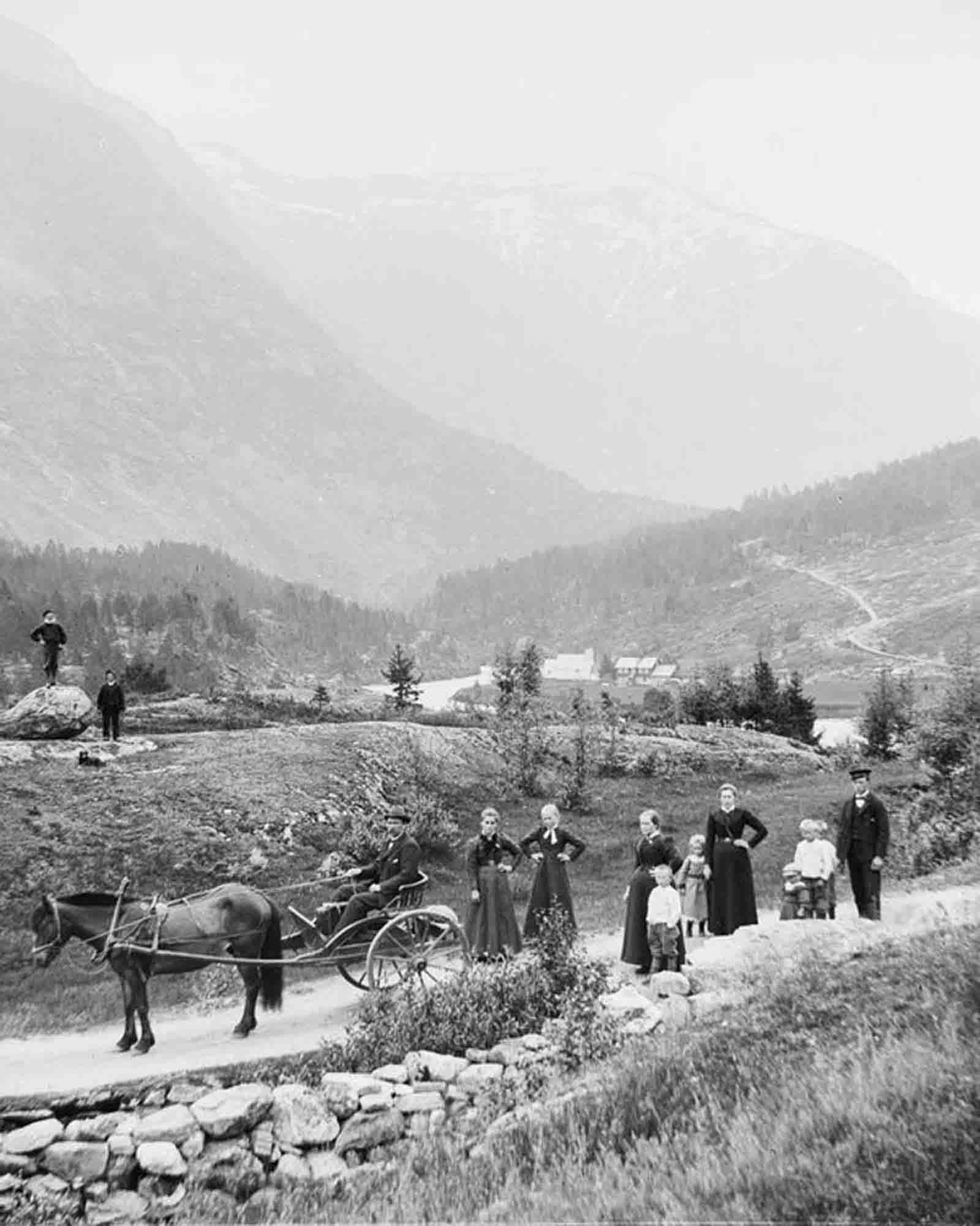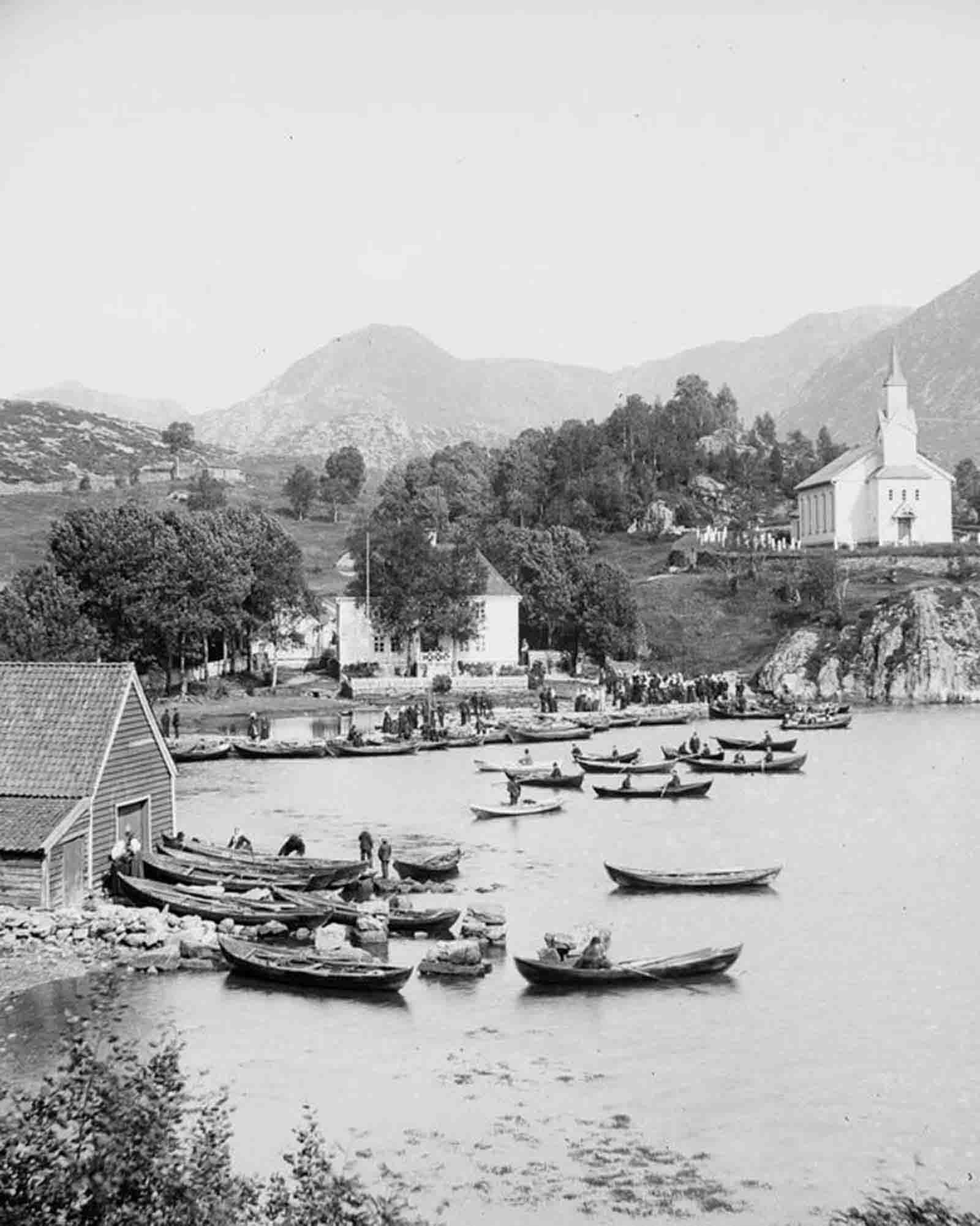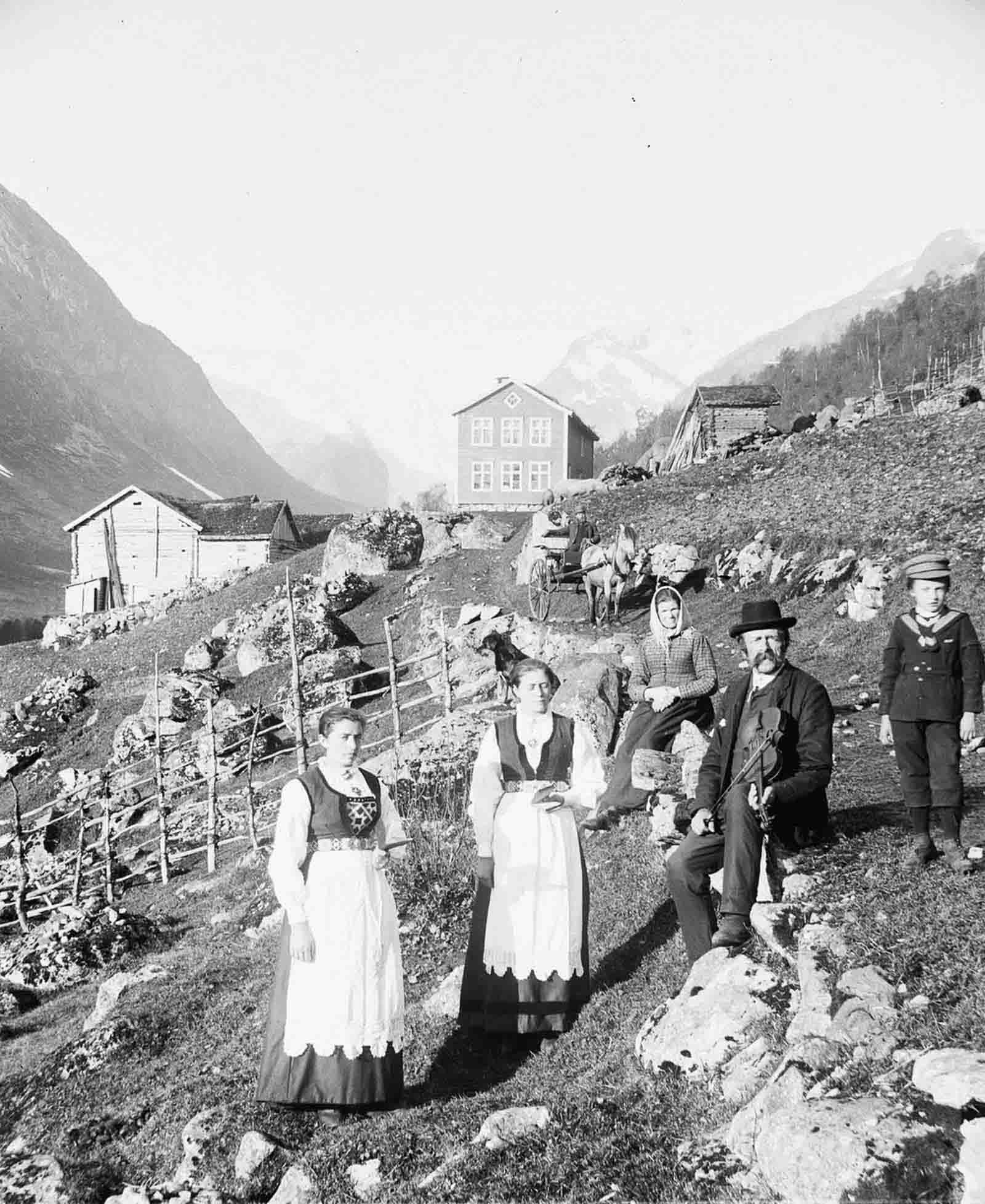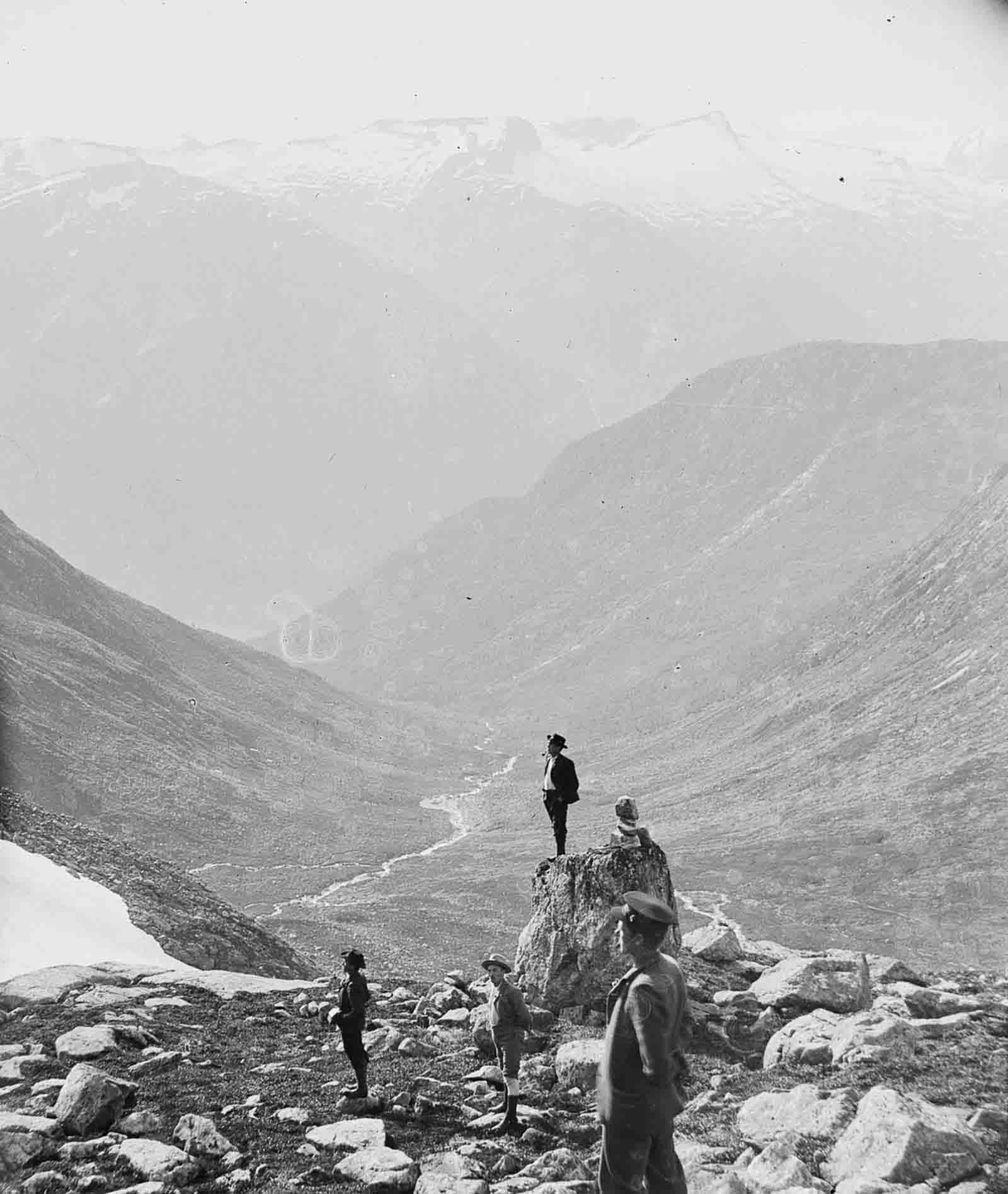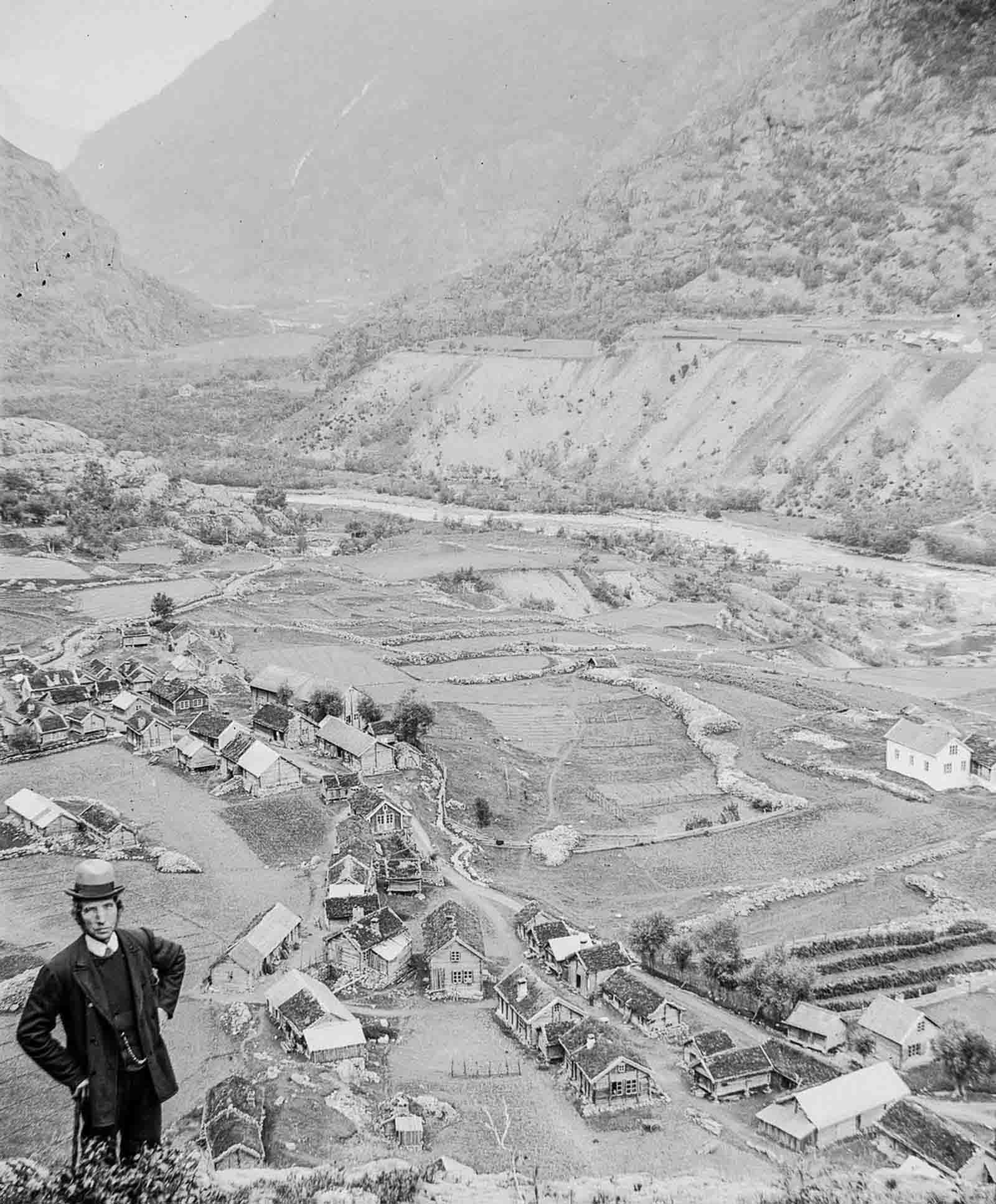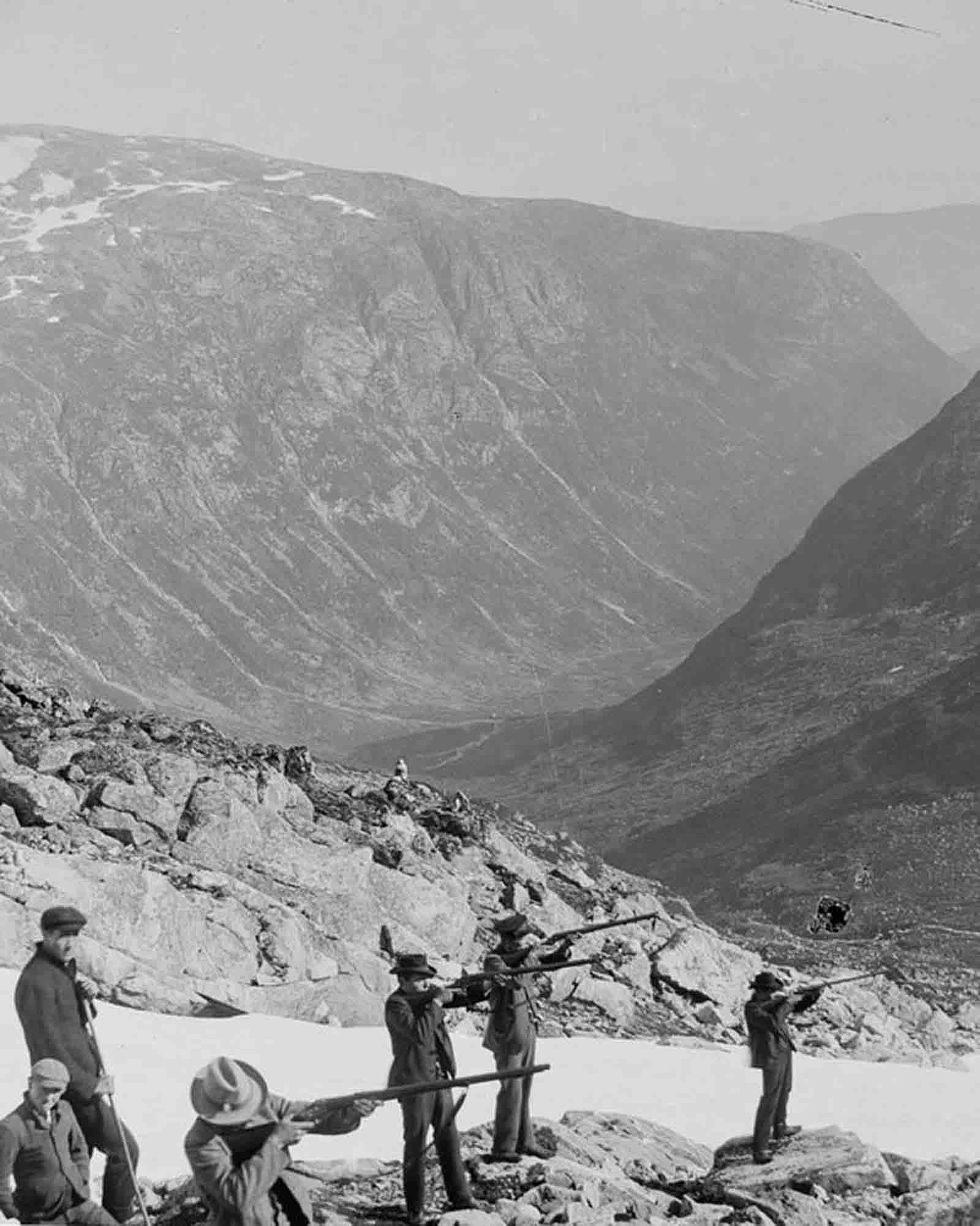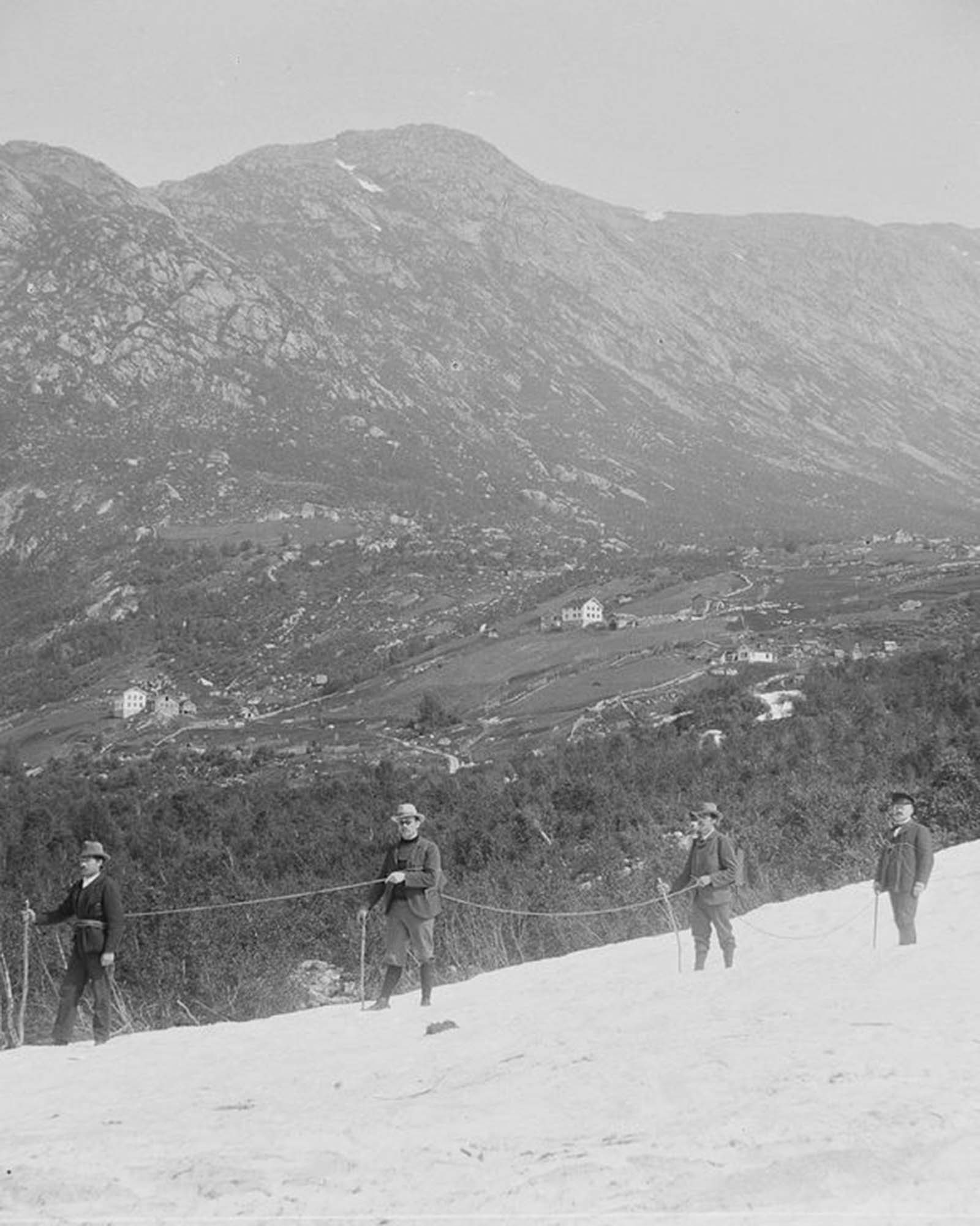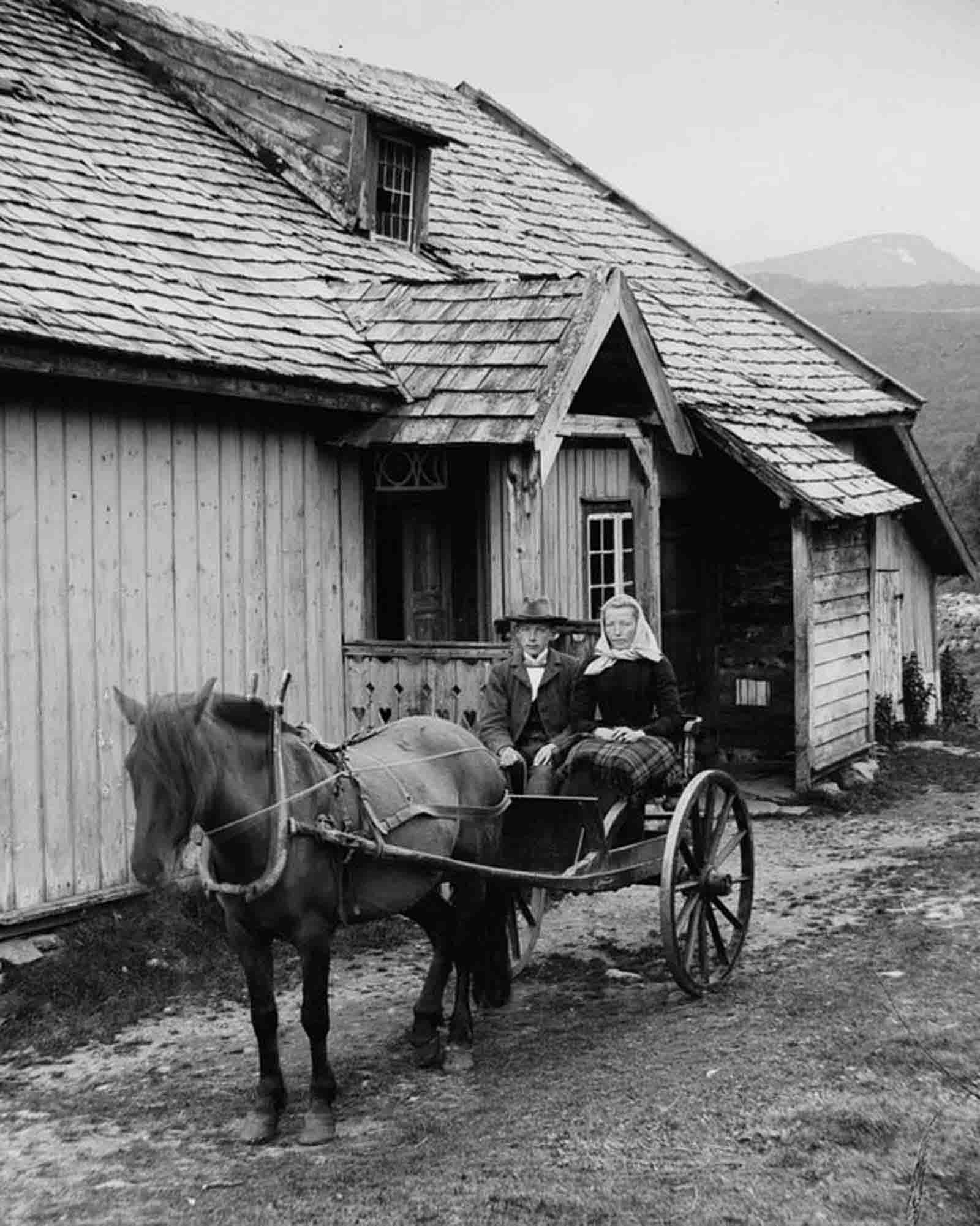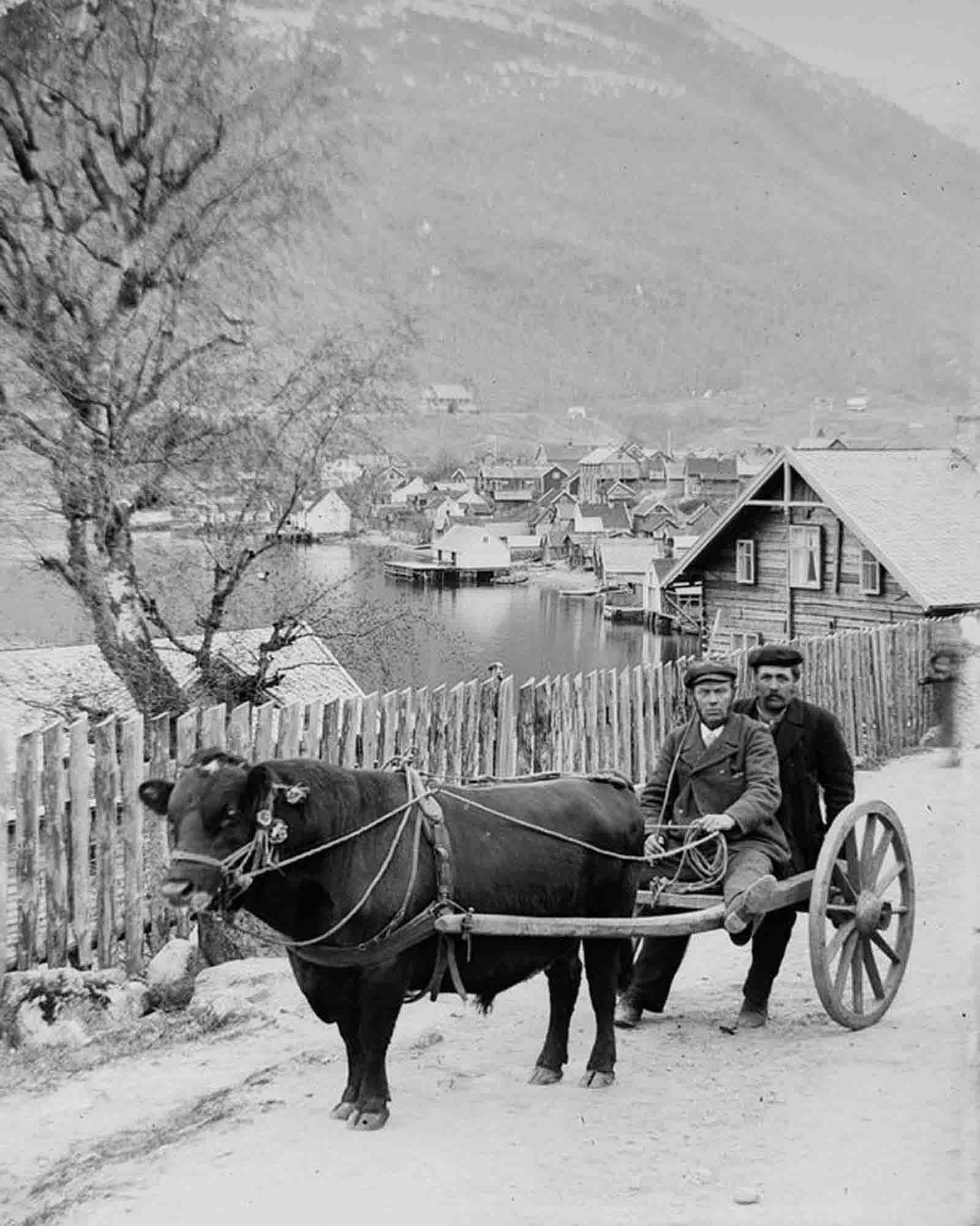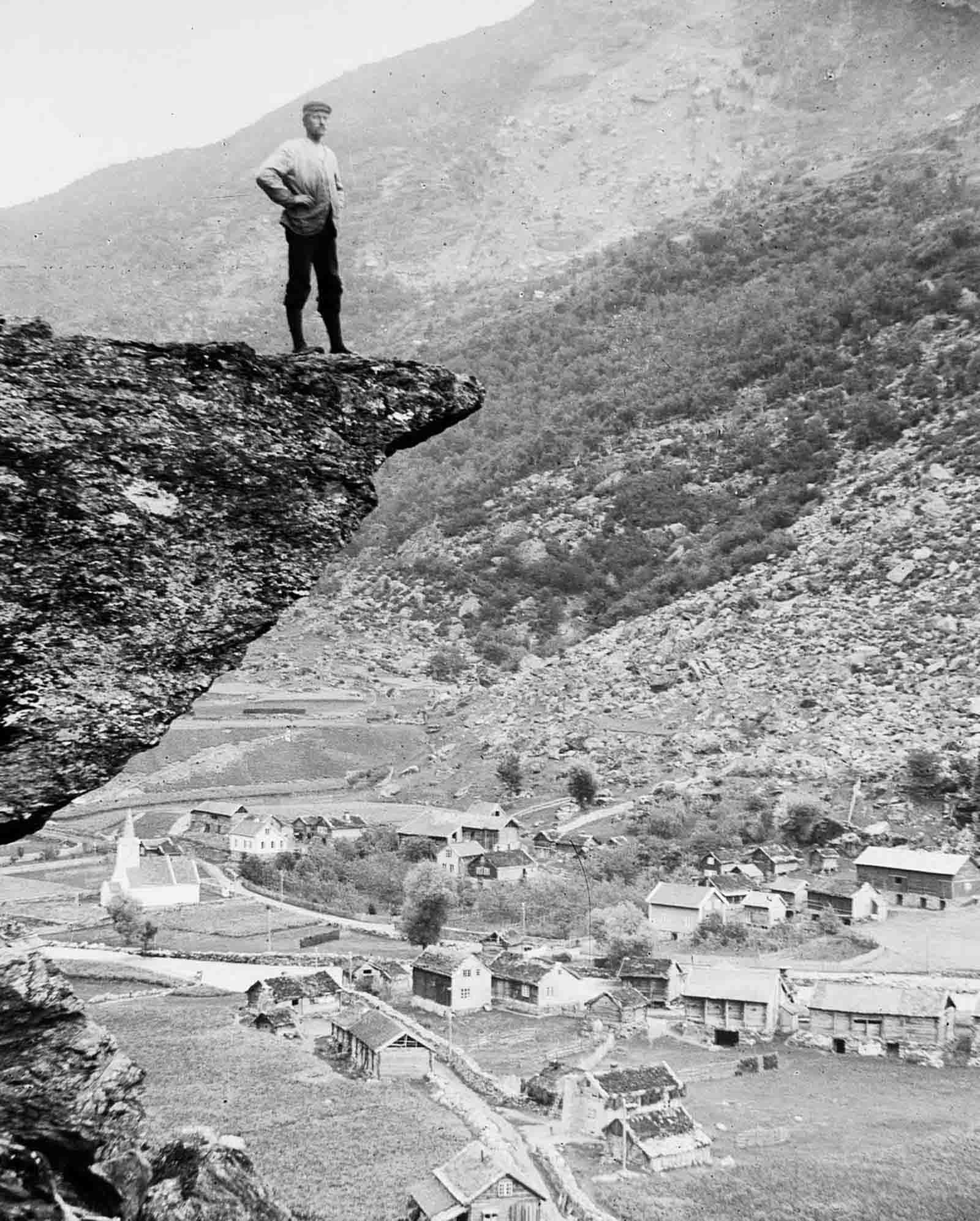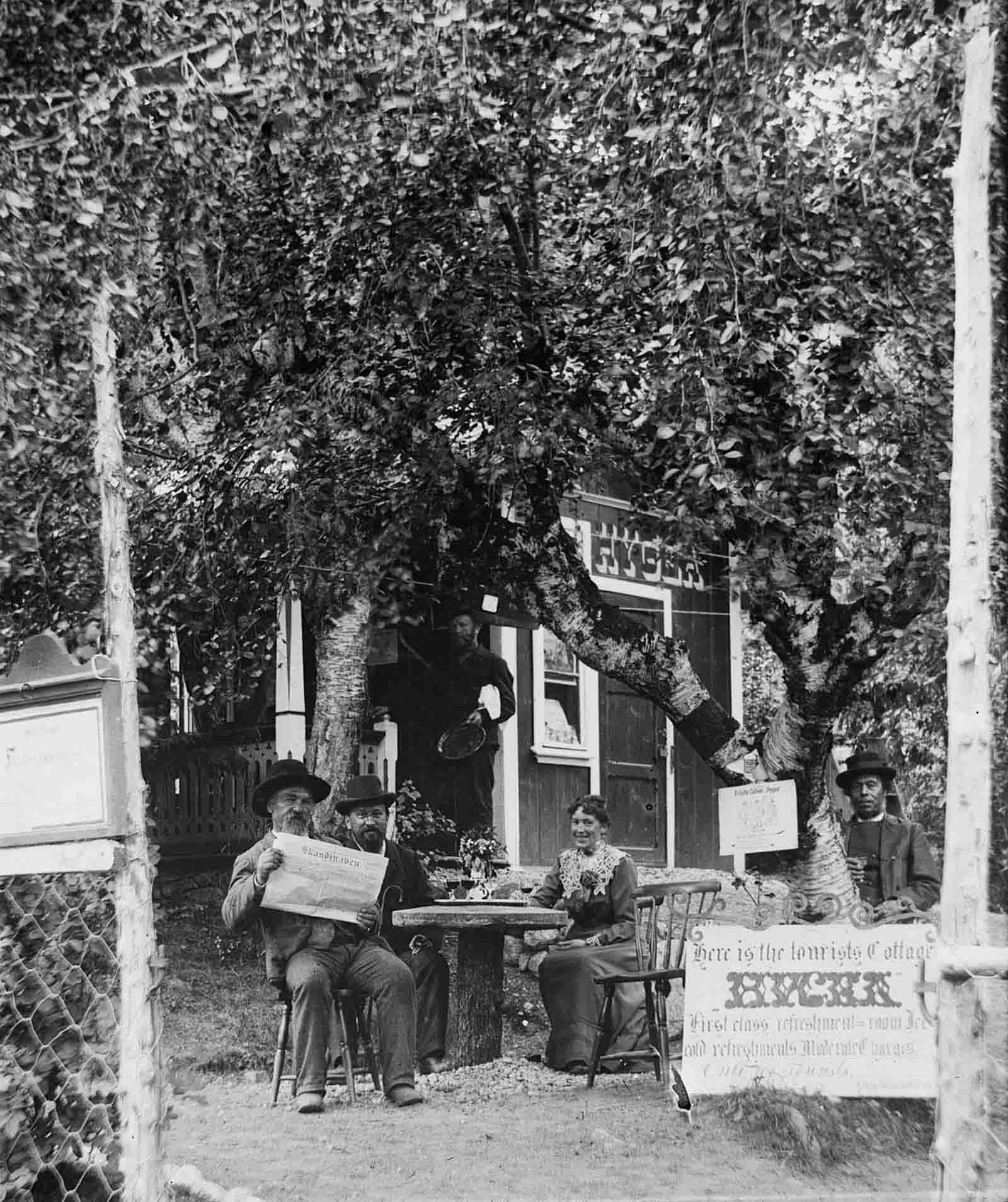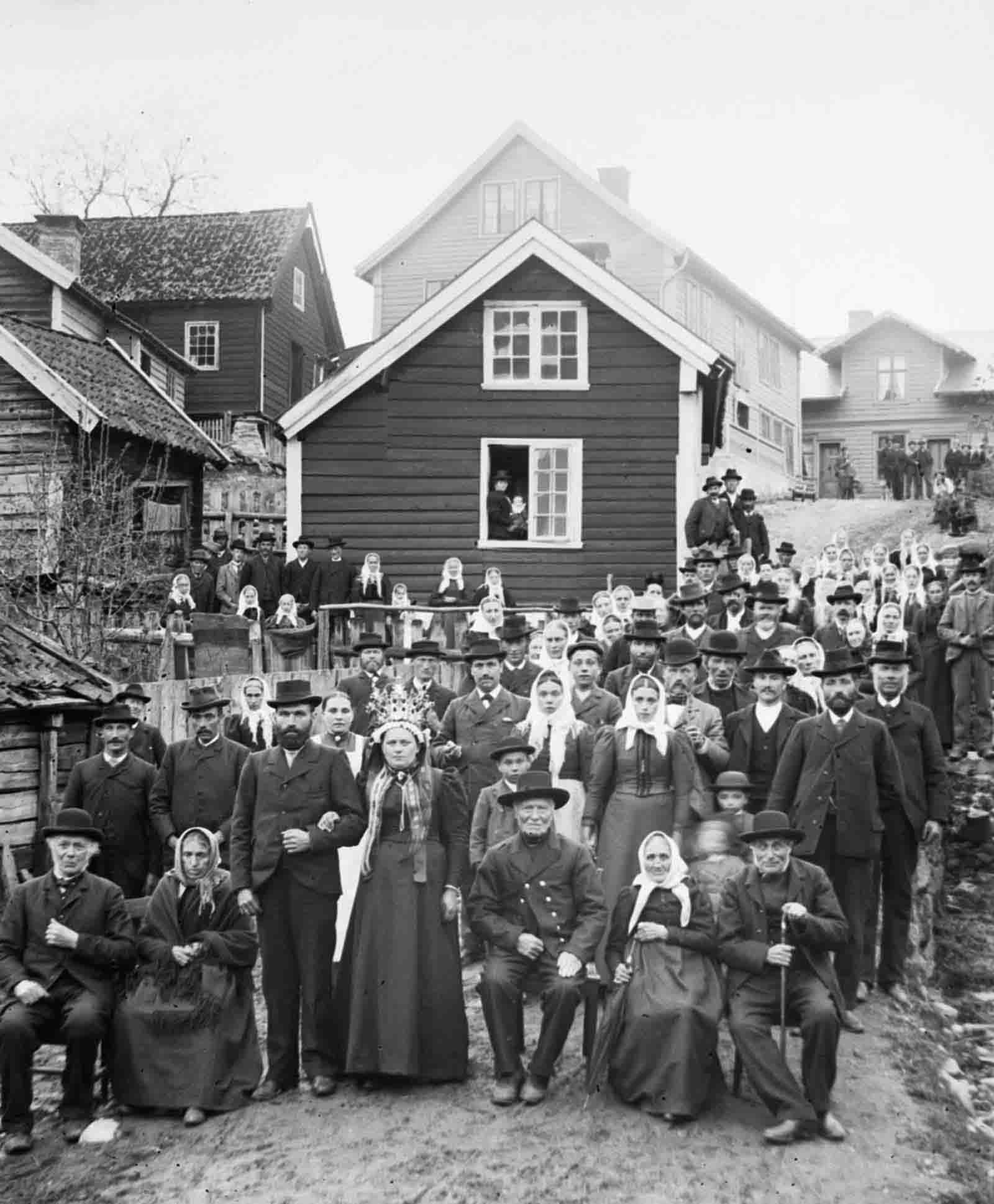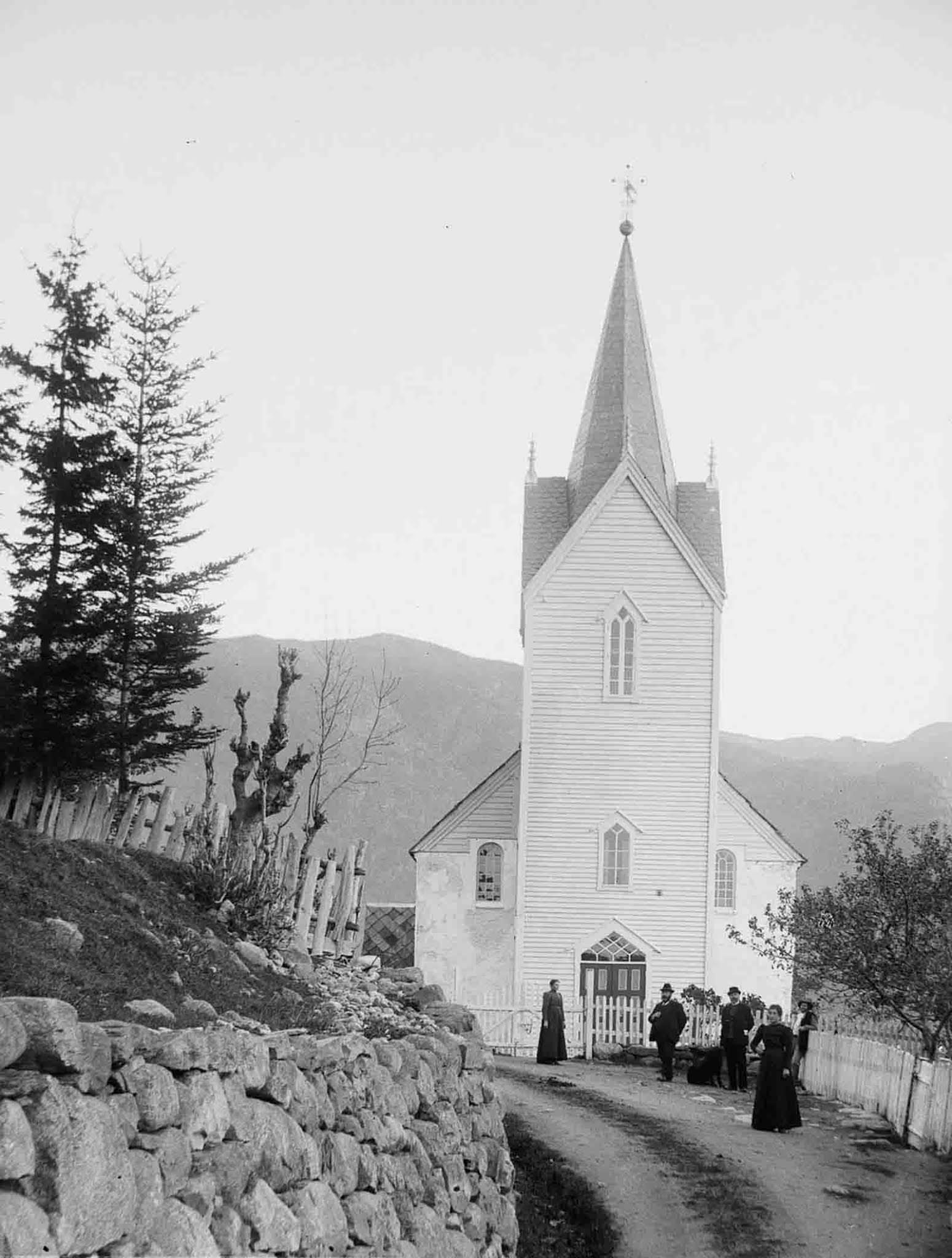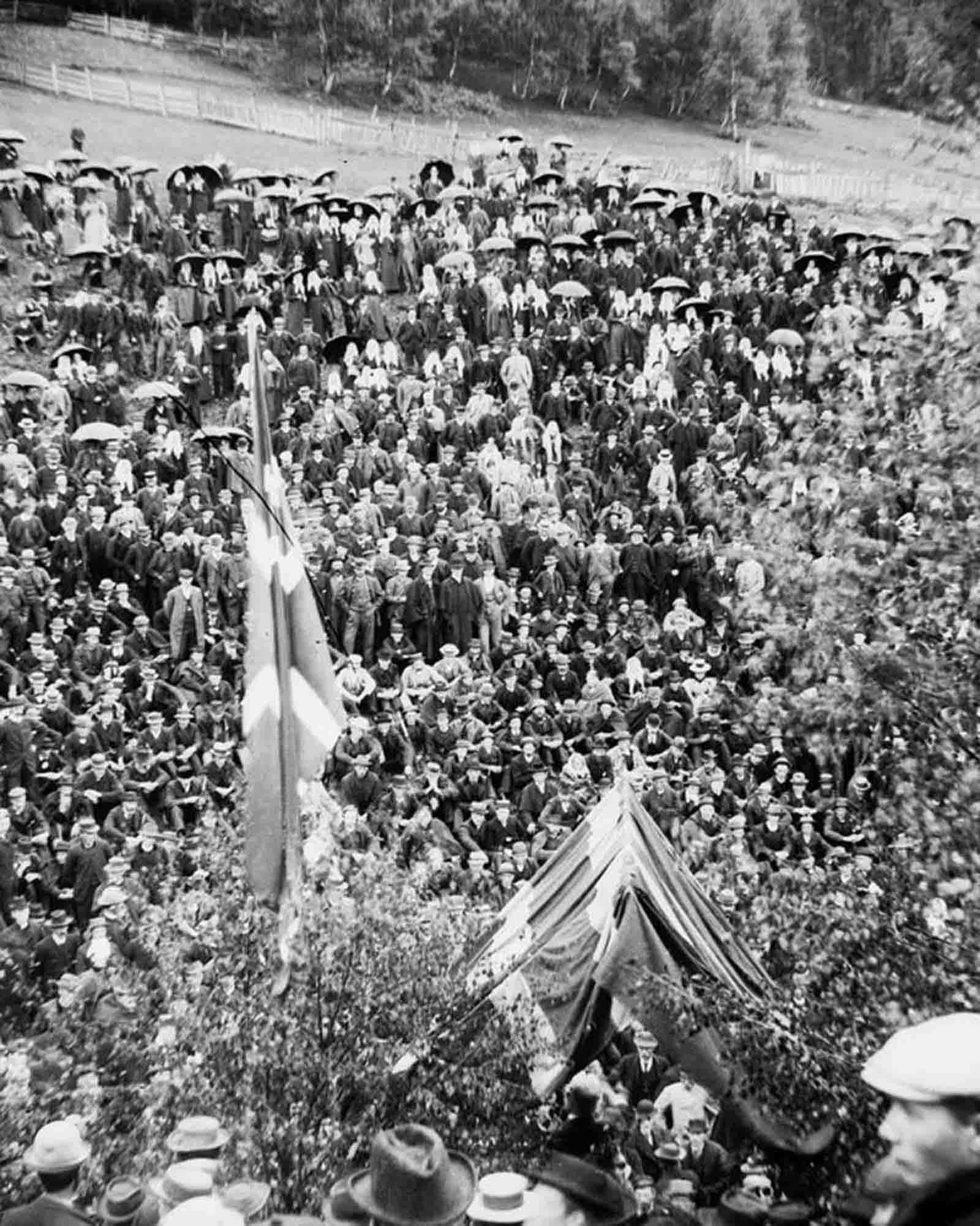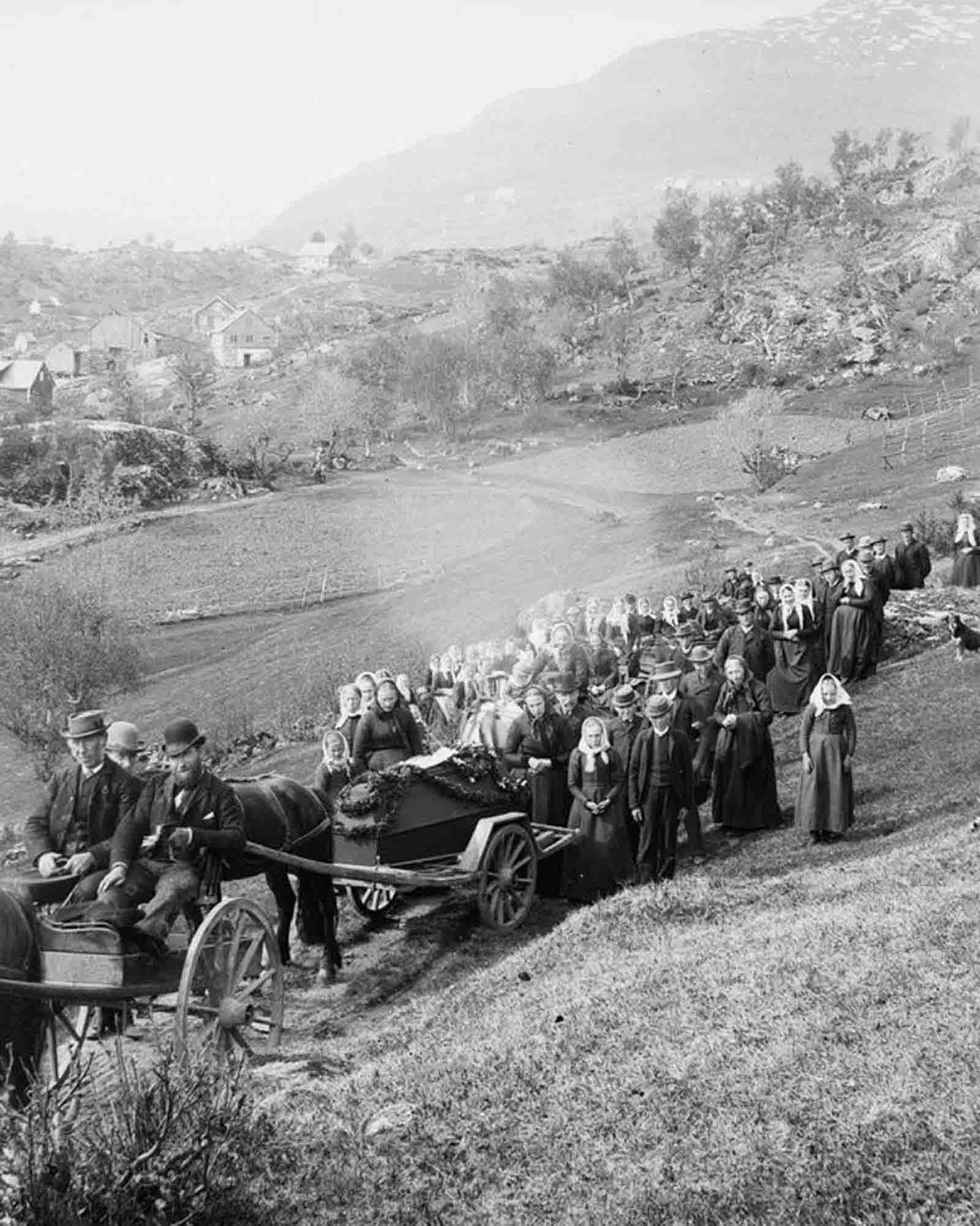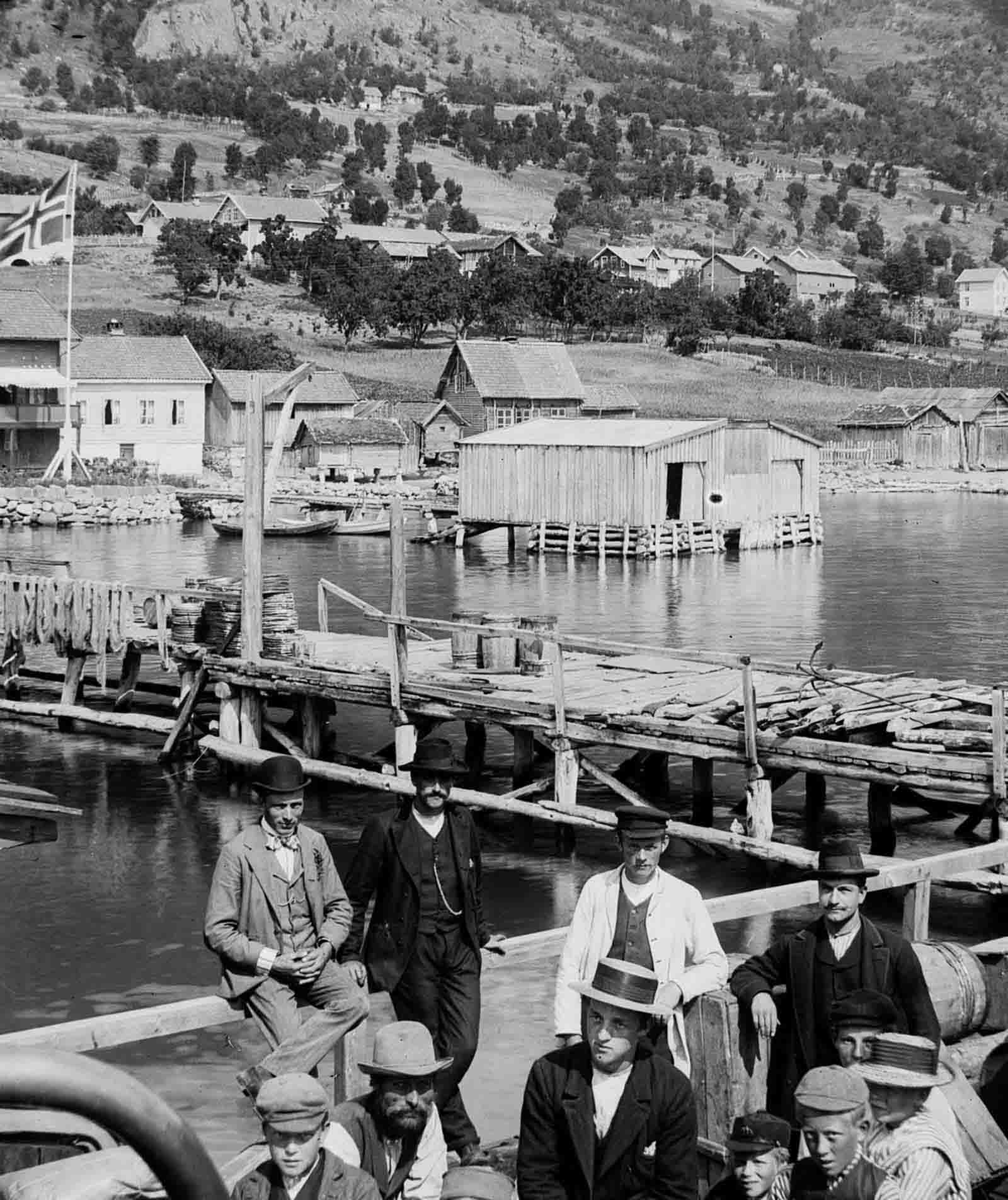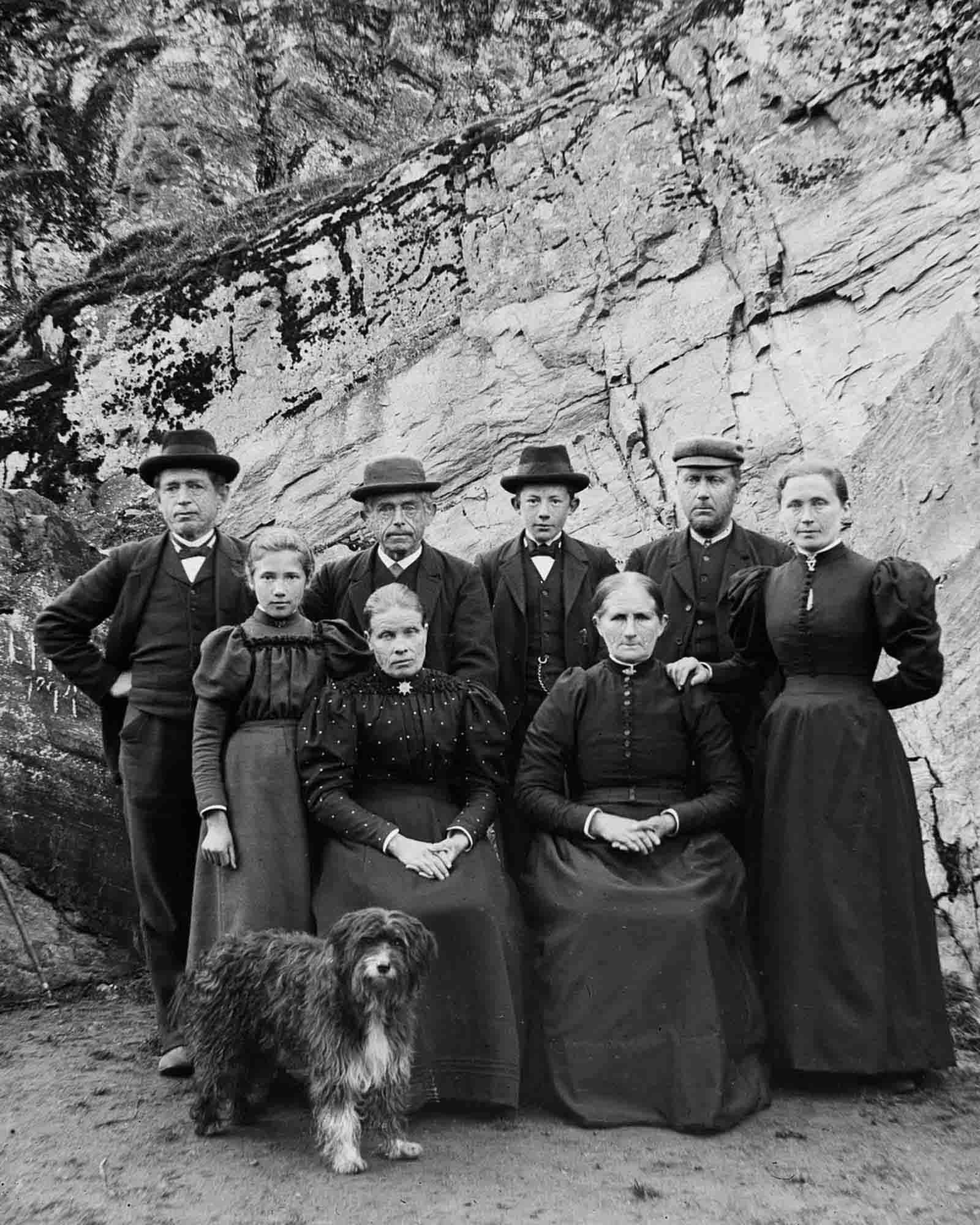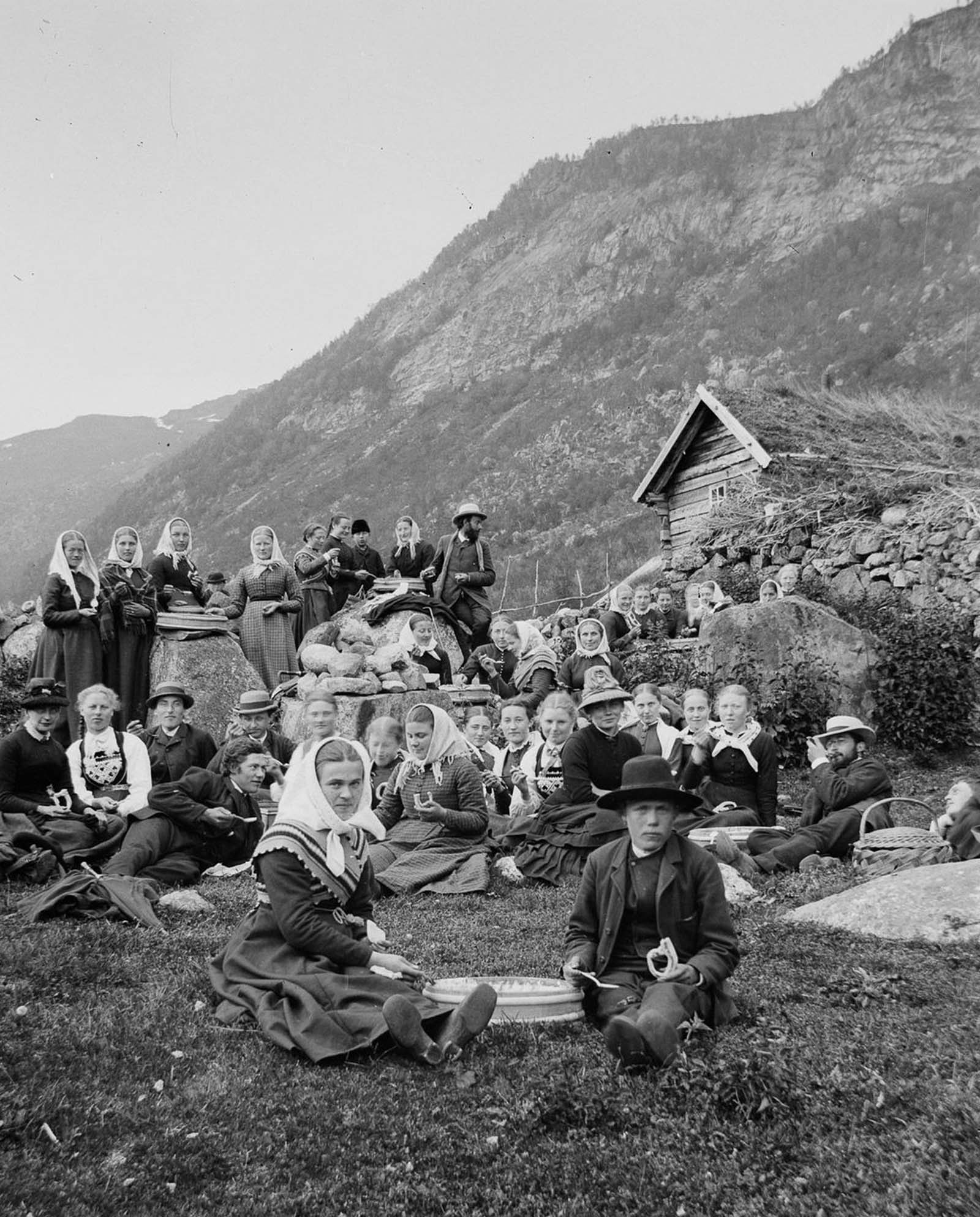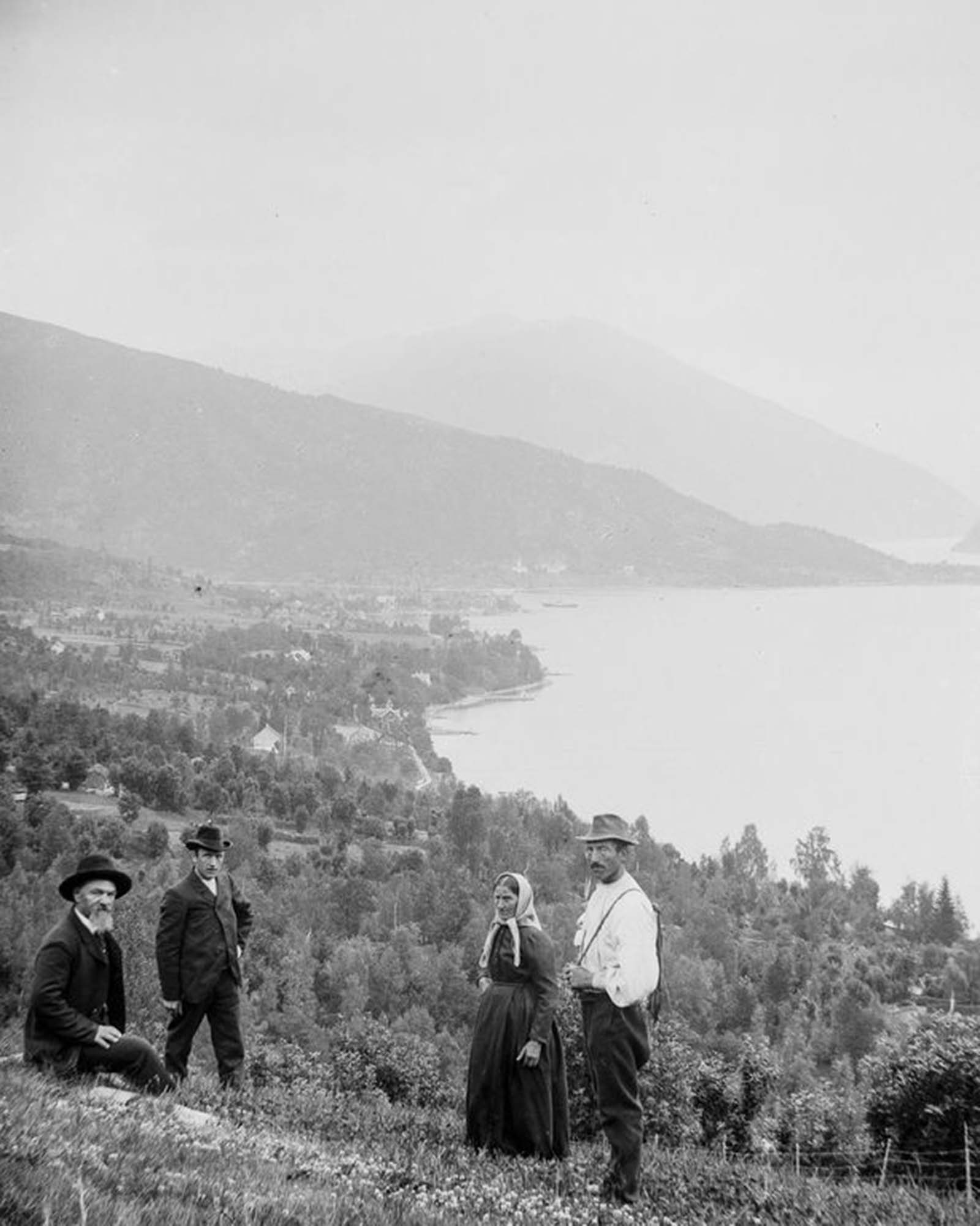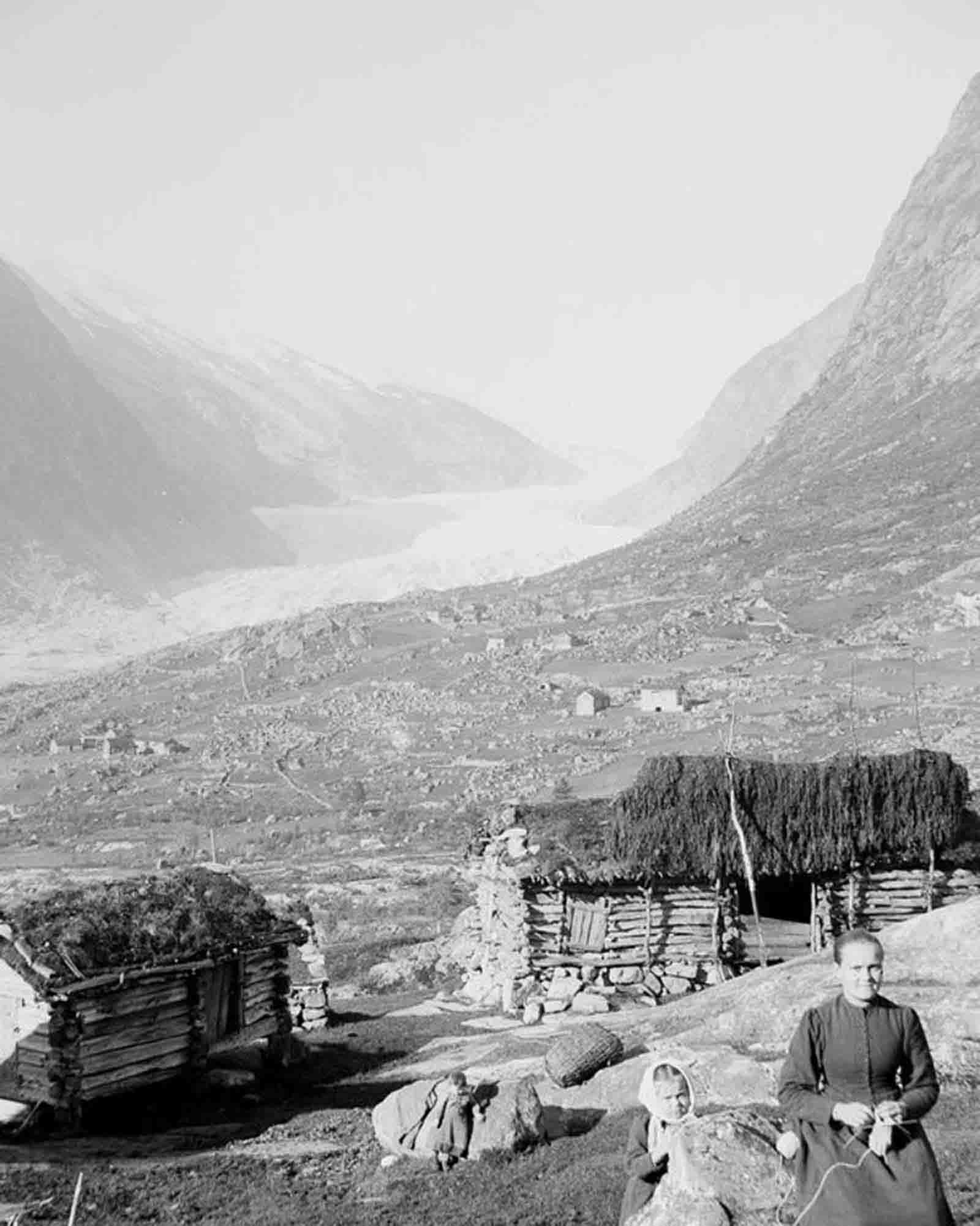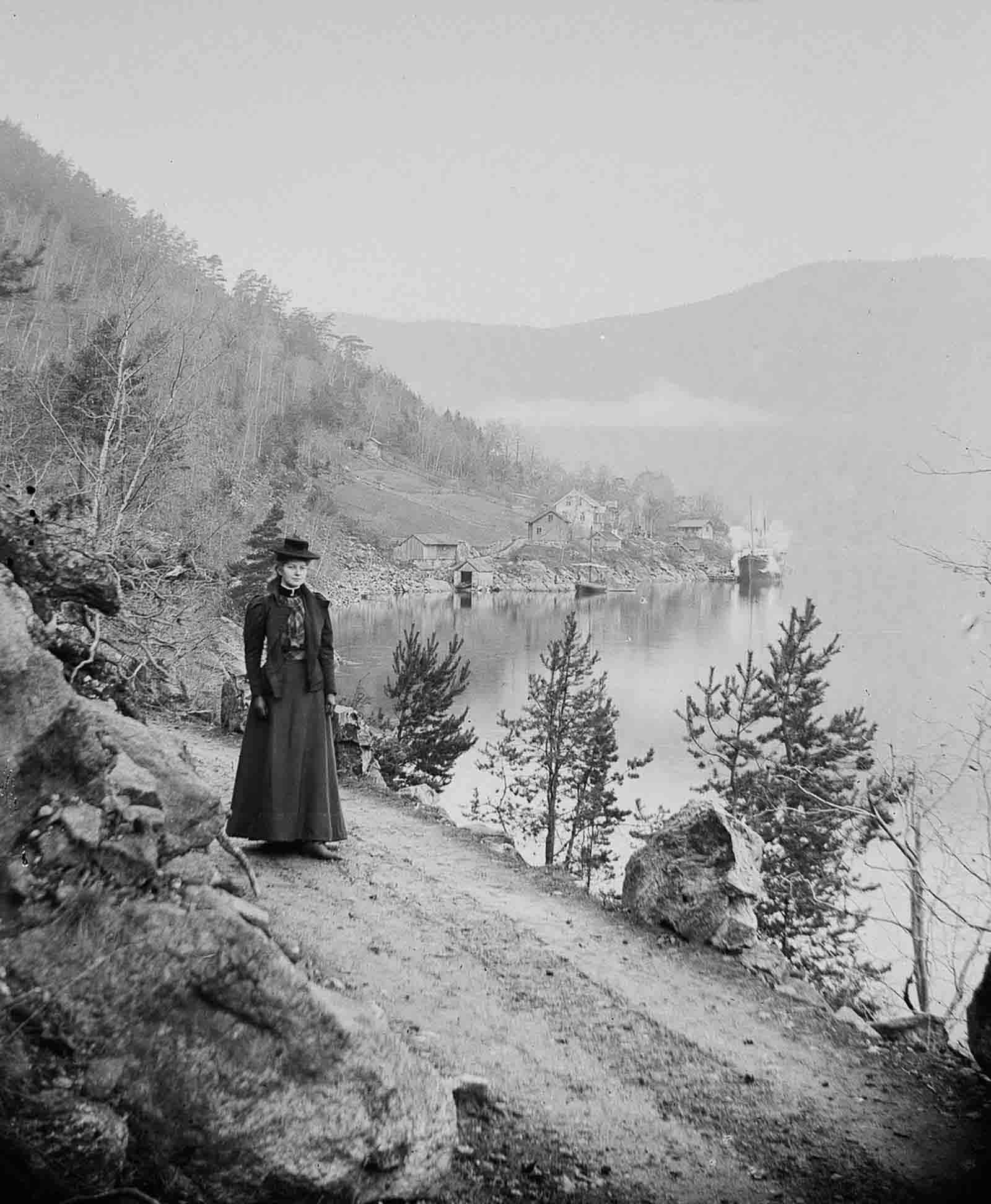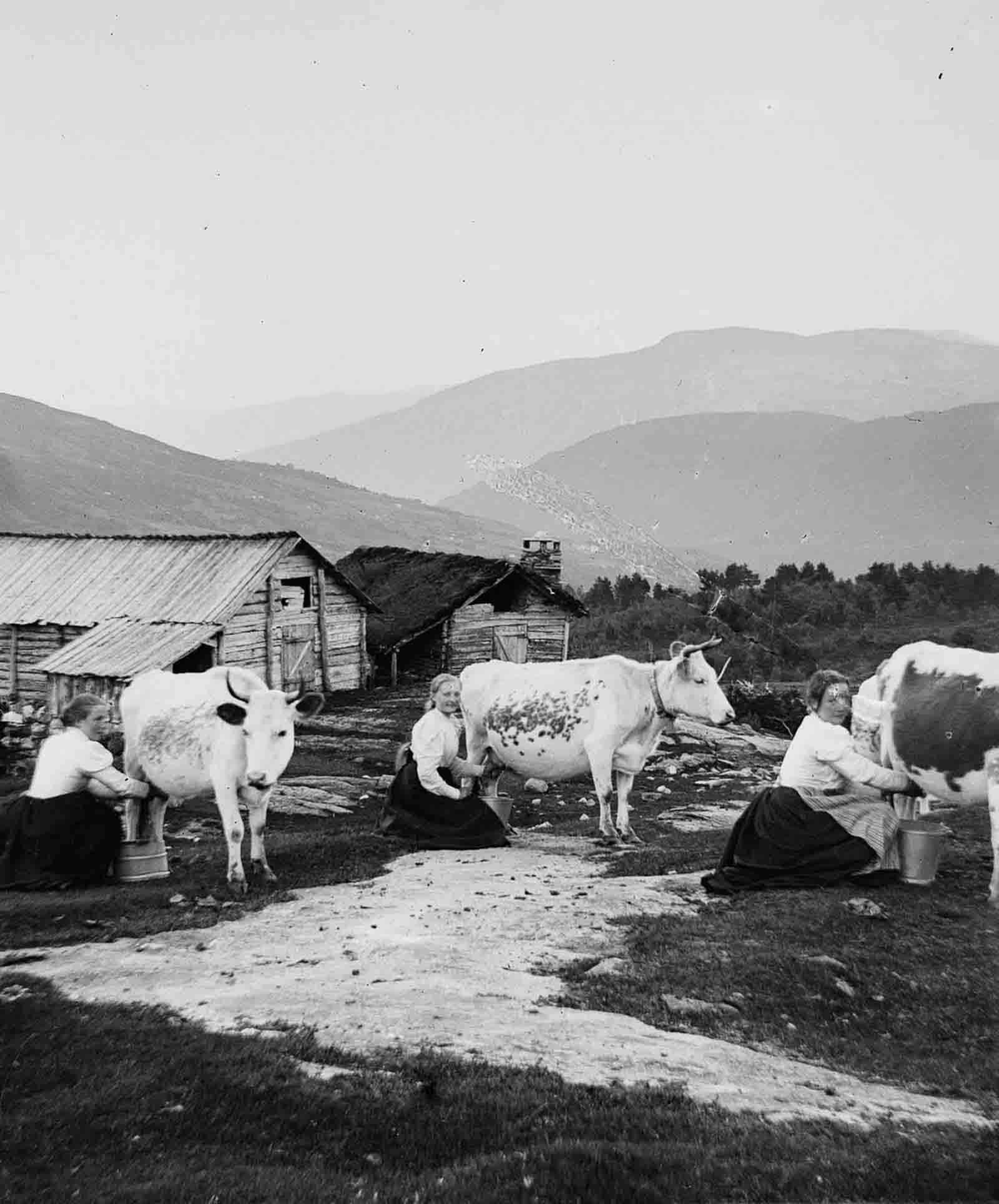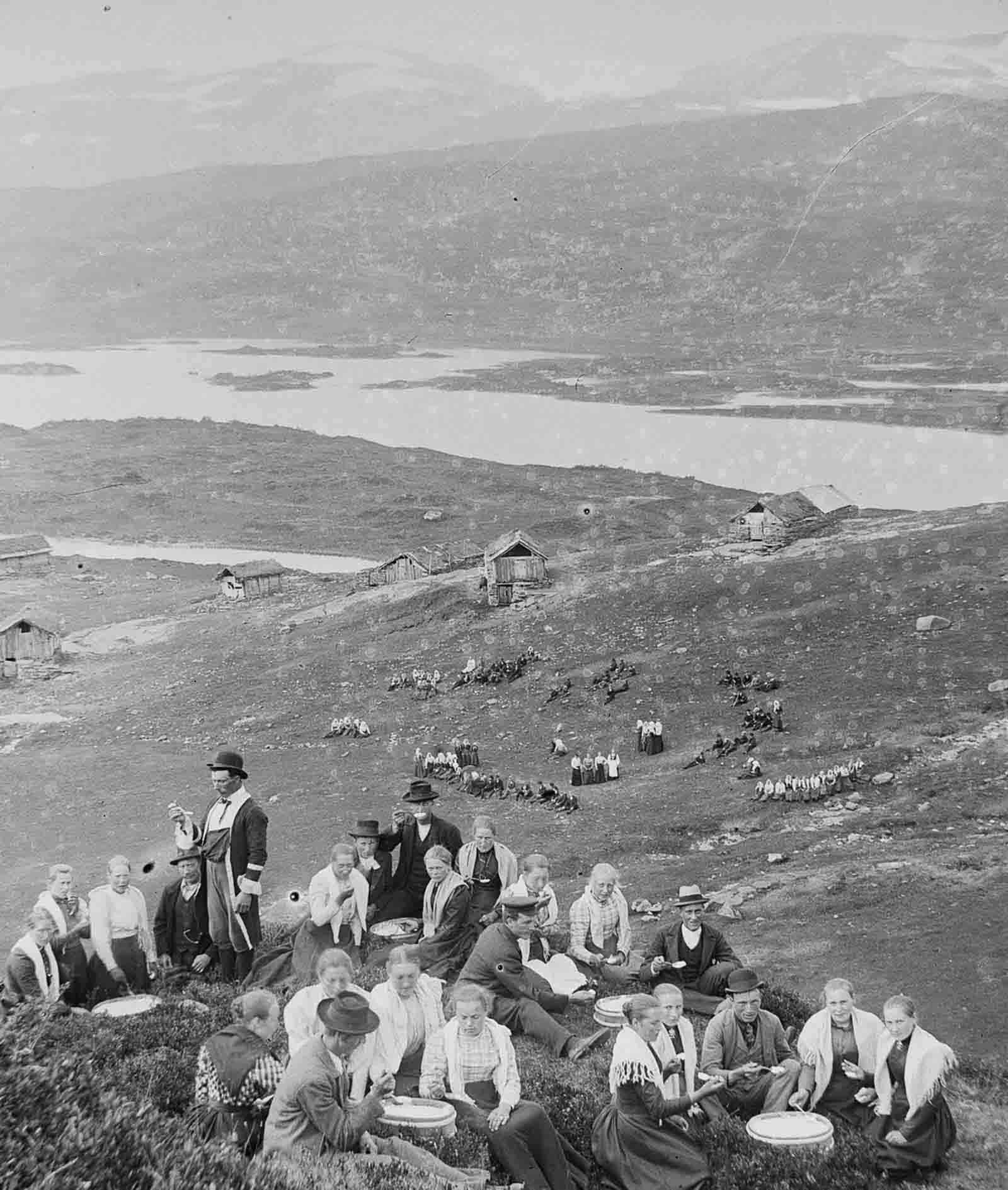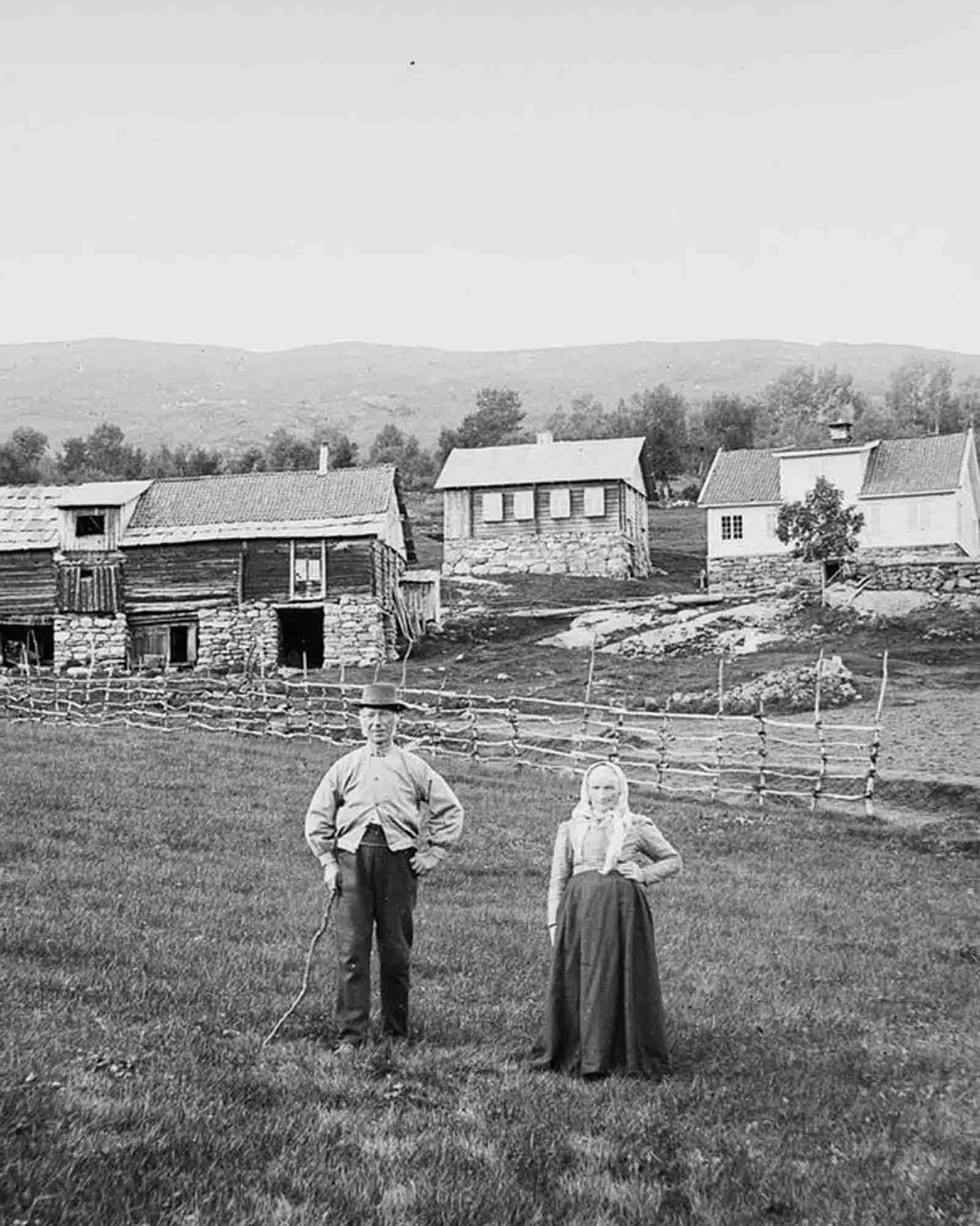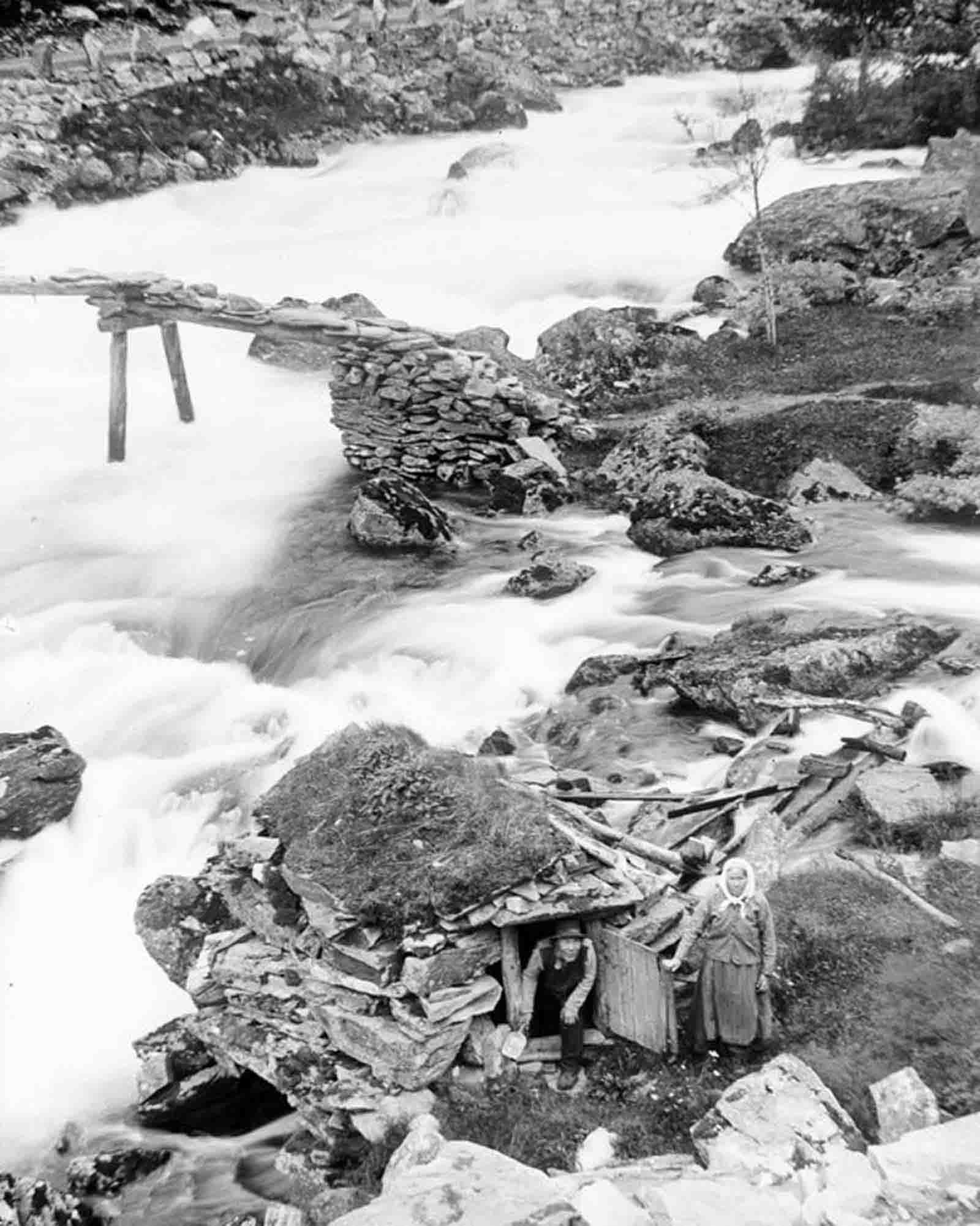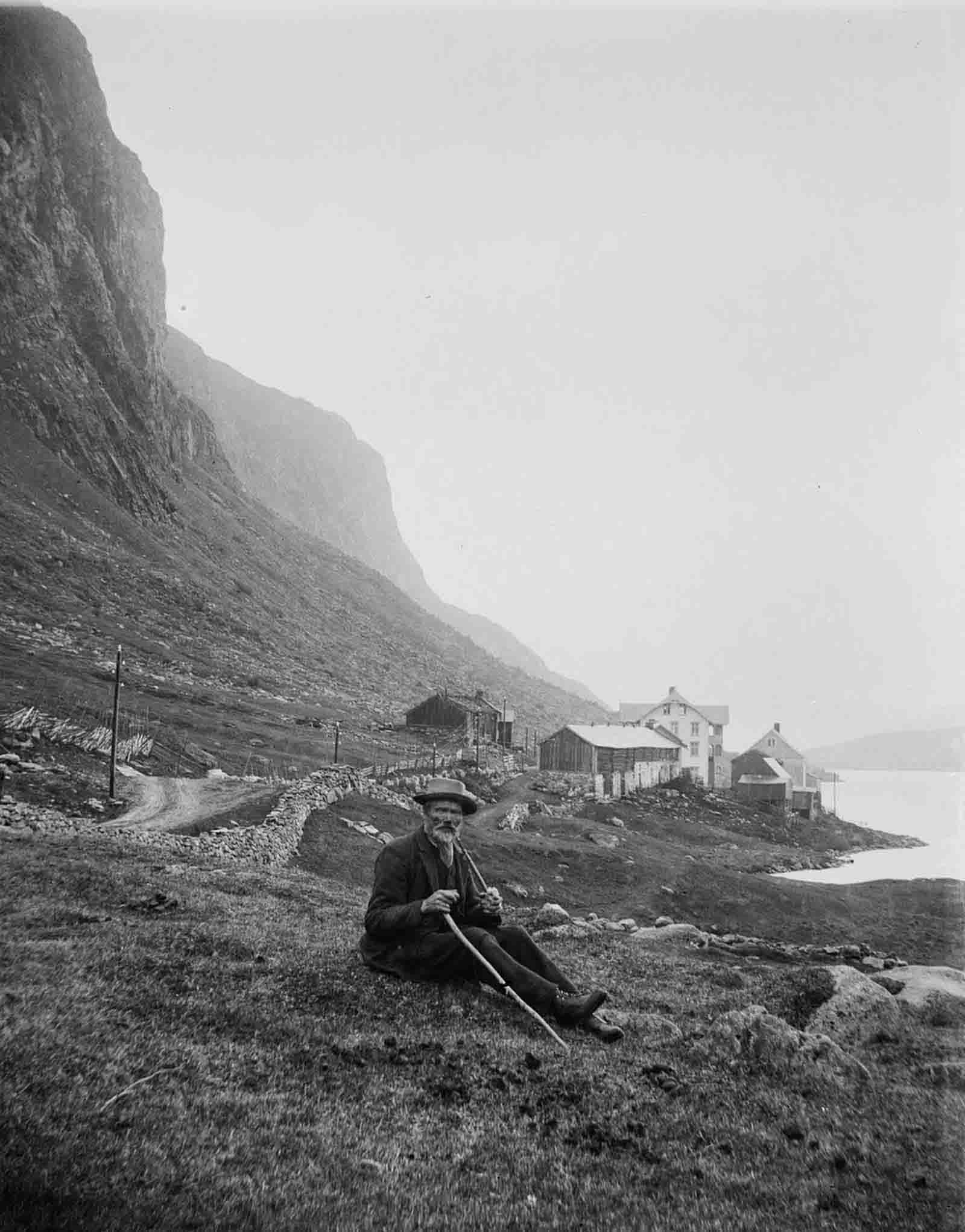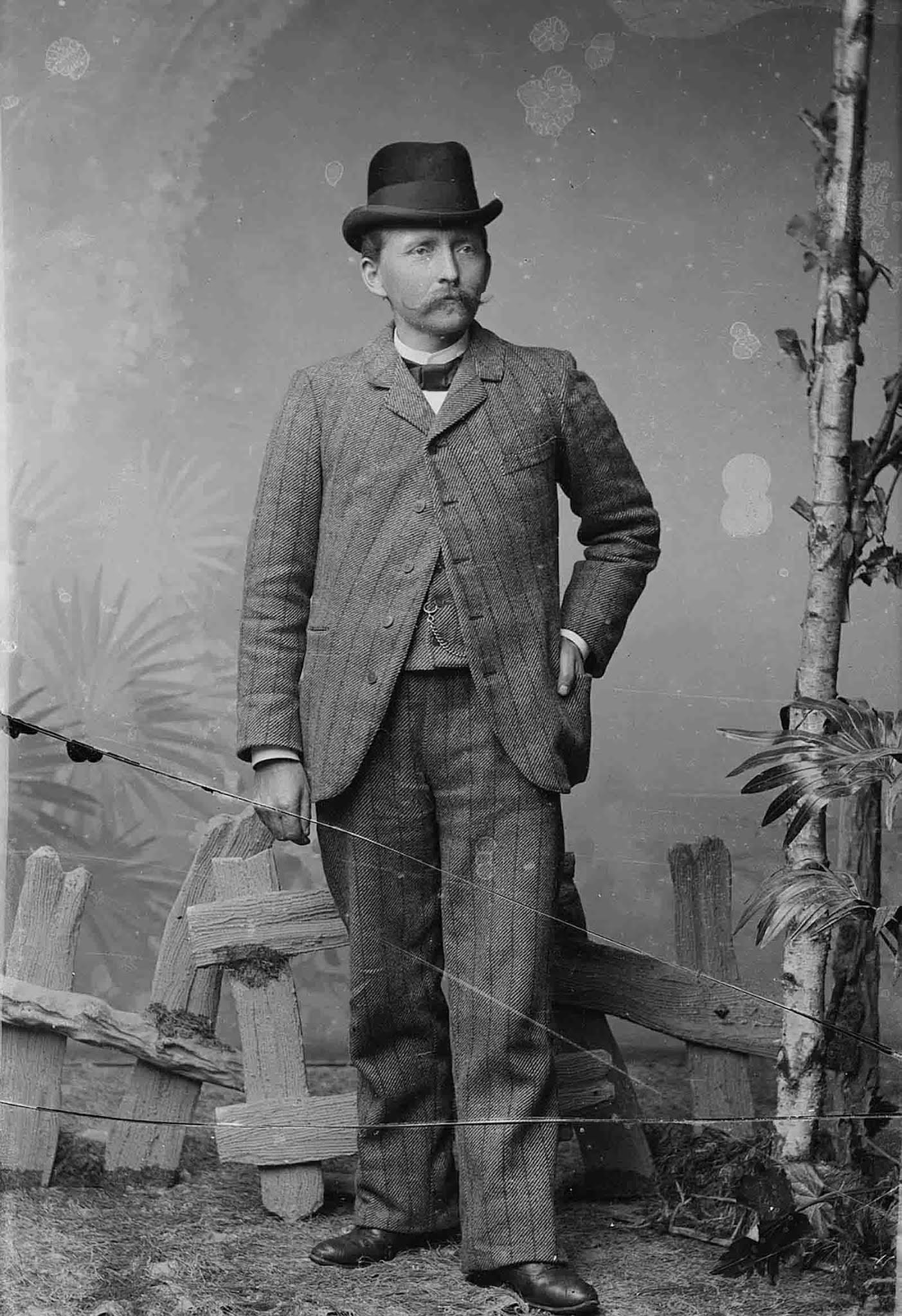Nils Olsson Reppen was born in 1856 on the farm Reppen in Sogndal, in western Norway. He immigrated to the U.S. in 1882 and worked as a photographer in Browns Valley and Morris, Minnesota. Reppen returned to Norway in the late 1890s and continued to work as a photographer in Sogndal, the village where he was born. It is situated by the Sognefjord, Norway’s longest and deepest fjord. Using a large-format stereoscopic camera, Nils Olsson Reppen took portraits of his countrymen outdoors amid the area’s idyllic fjords, glaciers, and mountains. The subjects were positioned at the bottom of the frame or in the distance, and the landscape towered over them.
He lost most of his glass plate negatives in 1965 when part of his photo collection burned down to the ground. Approximately 424 negatives remain from Reppen, showing provincial pride and humility before a stunning setting. These images depict nature, farms, mountain farms, the fjords, and villages in the Sognefjord area around 1900.
History of seaside Sogndalsfjøra Settlement
The seaside settlement of Sogndalsfjøra, the center of Sogndal, has a long and distinguished history. There were probably general stores and bakeries in the parish for centuries, which attest to its early significance as a center of trade and commerce. This was a community characterized by vigorous activity. Boat landings were established here for farmers living along the fjord, military functions were held there, and then house owners rented rooms to the first students of the newly established folk high school. A legal assembly was held in Hofslund, the vicar lived nearby, and the church was located nearby in Stedje. Since the 17th century, the region of Sogndalsfjøra has been inhabited. The permanent residents had reached 60-70 by 1701, mainly day laborers without property. Within a century, the population increased to 222, and by 1900, there were 422 residents. A widening and strengthening of the industrial base occurred at the end of the 19th century. In 1881, house painters, a goldsmith, saddlers, carpenters, shoemakers, watchmakers, tinkers, and butchers.


